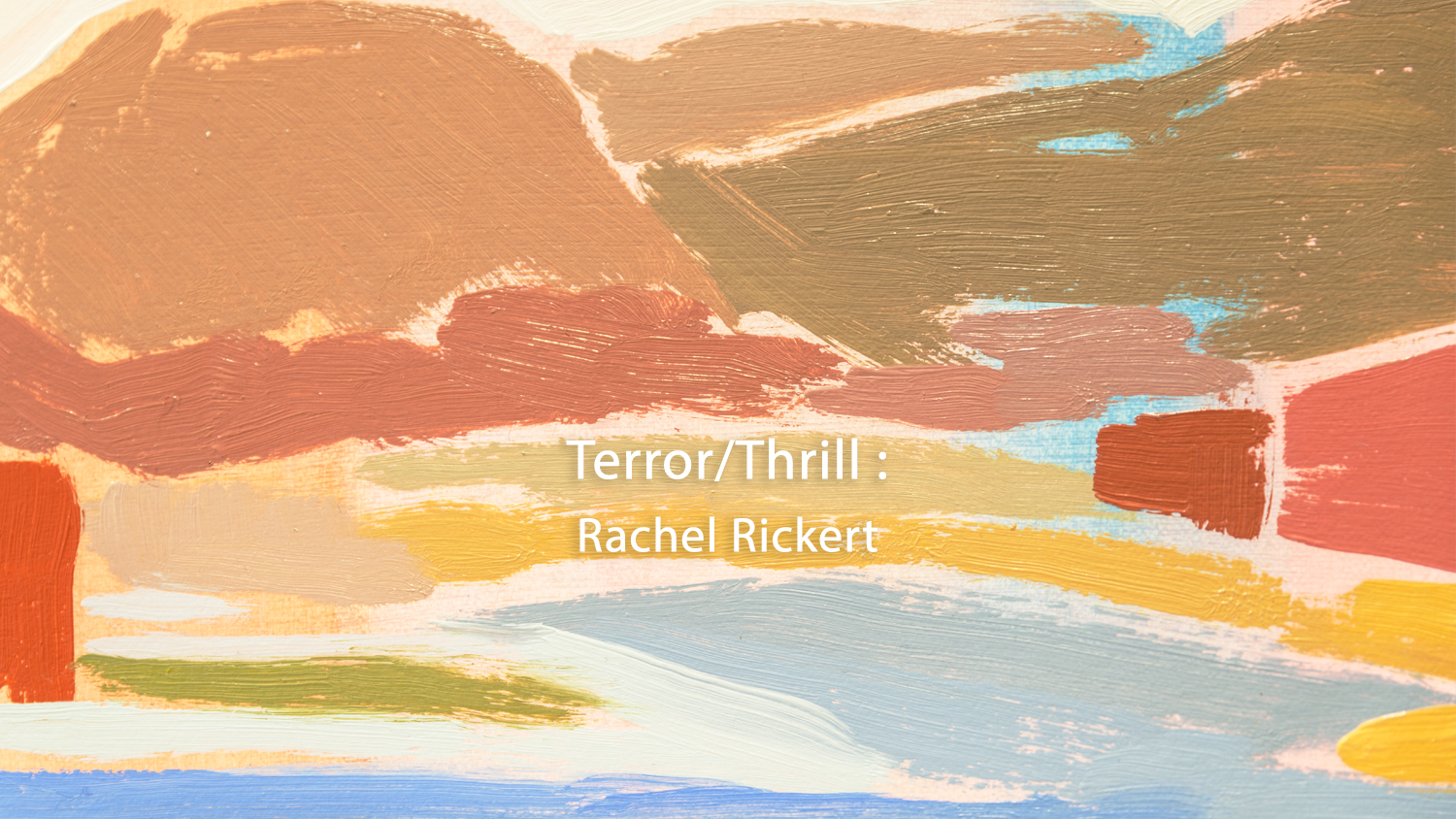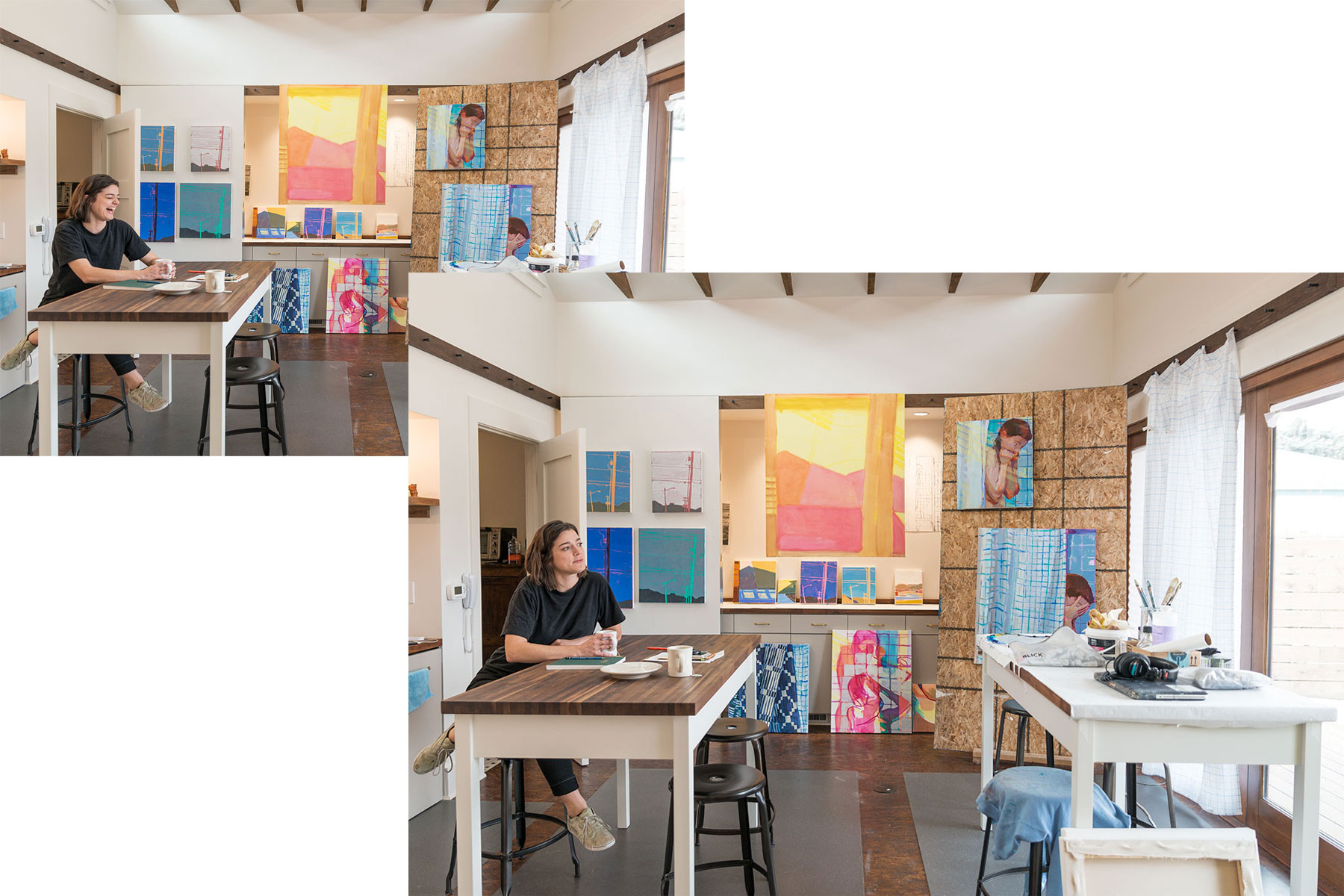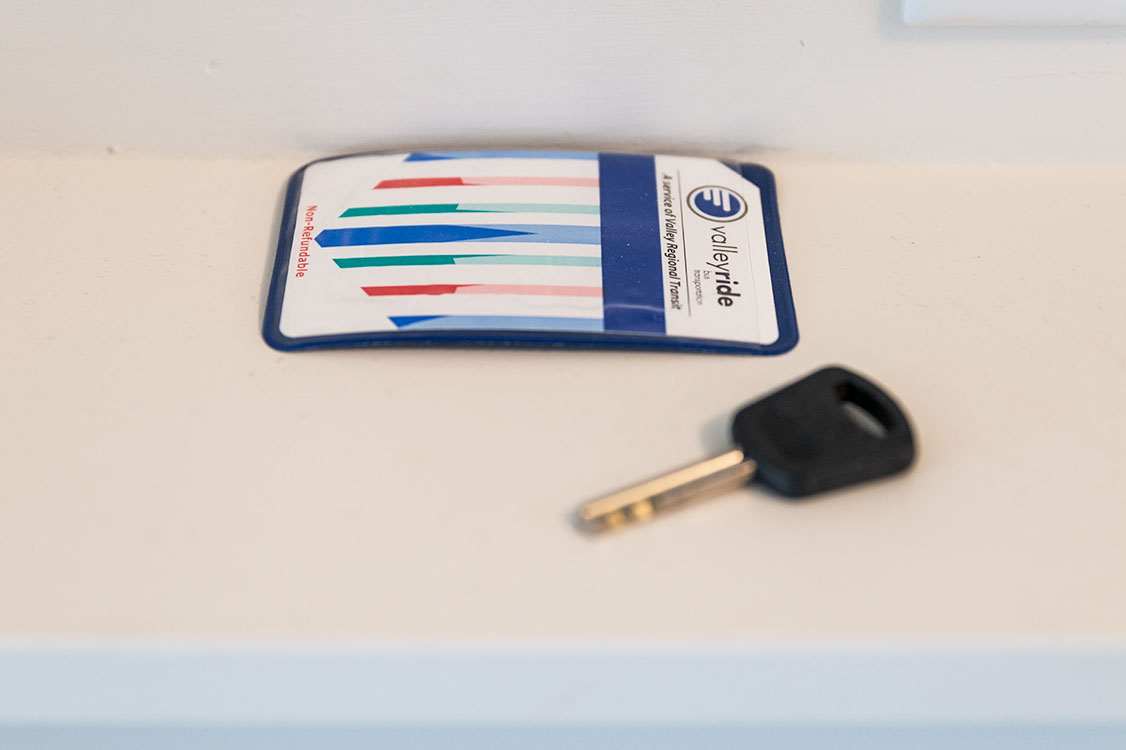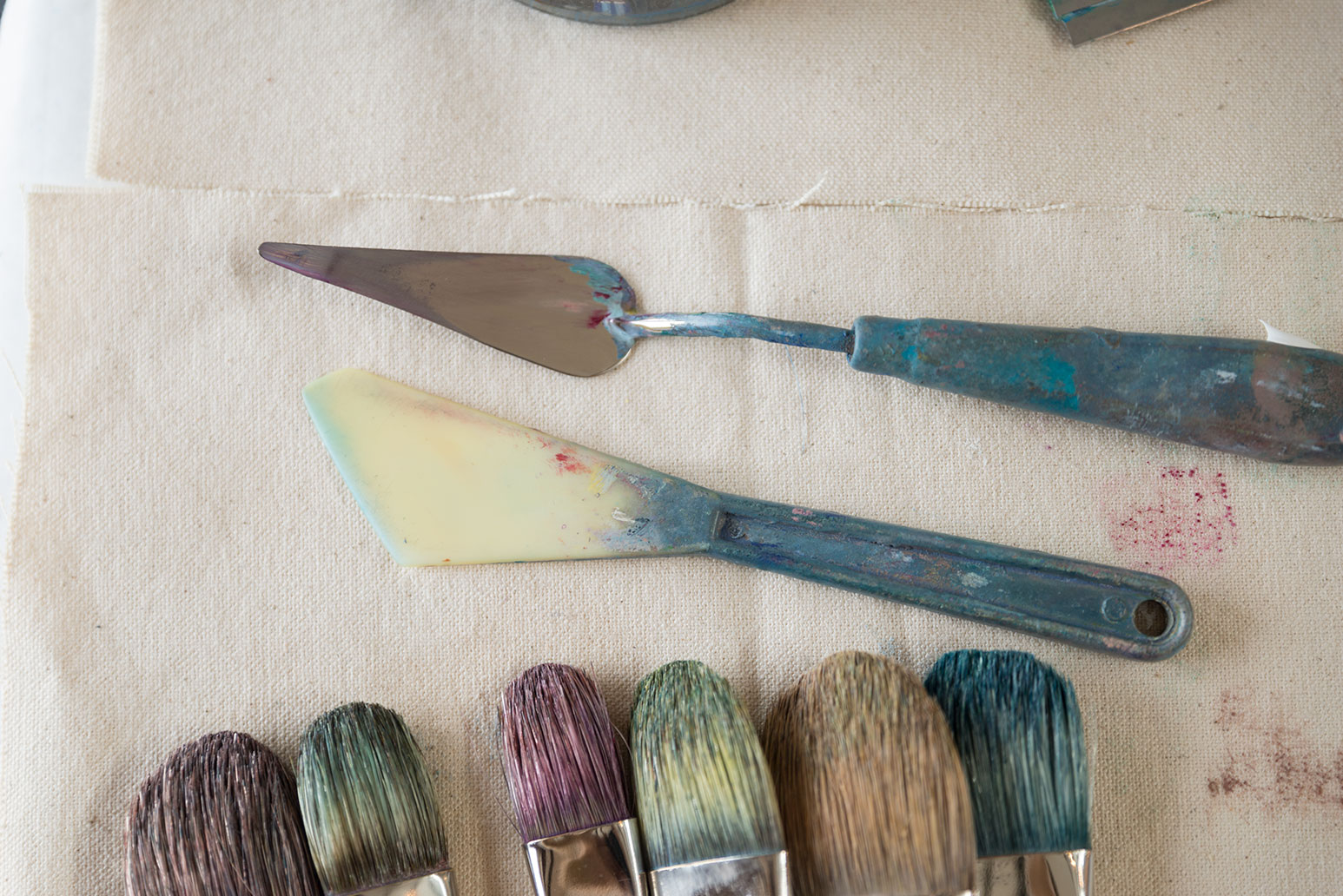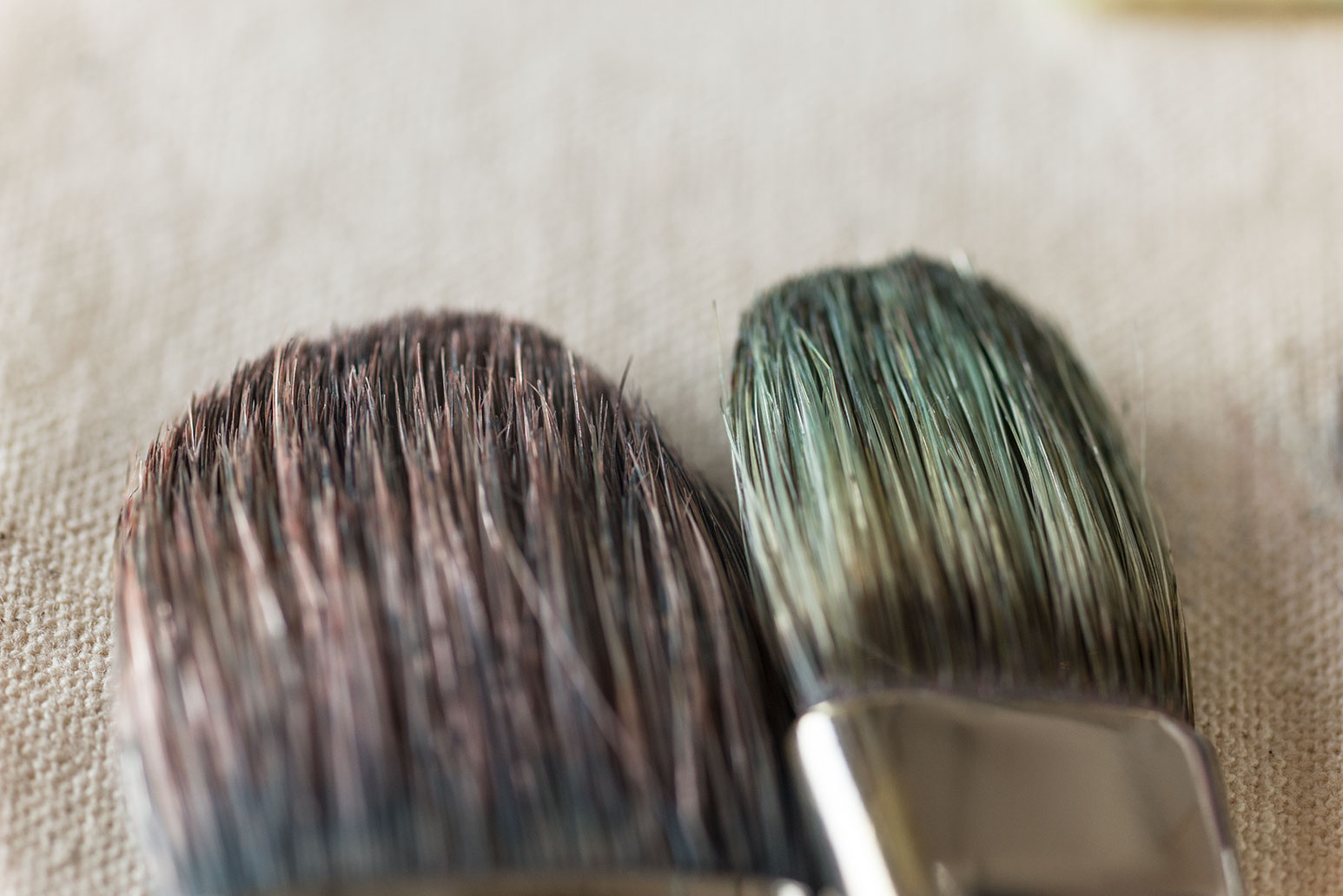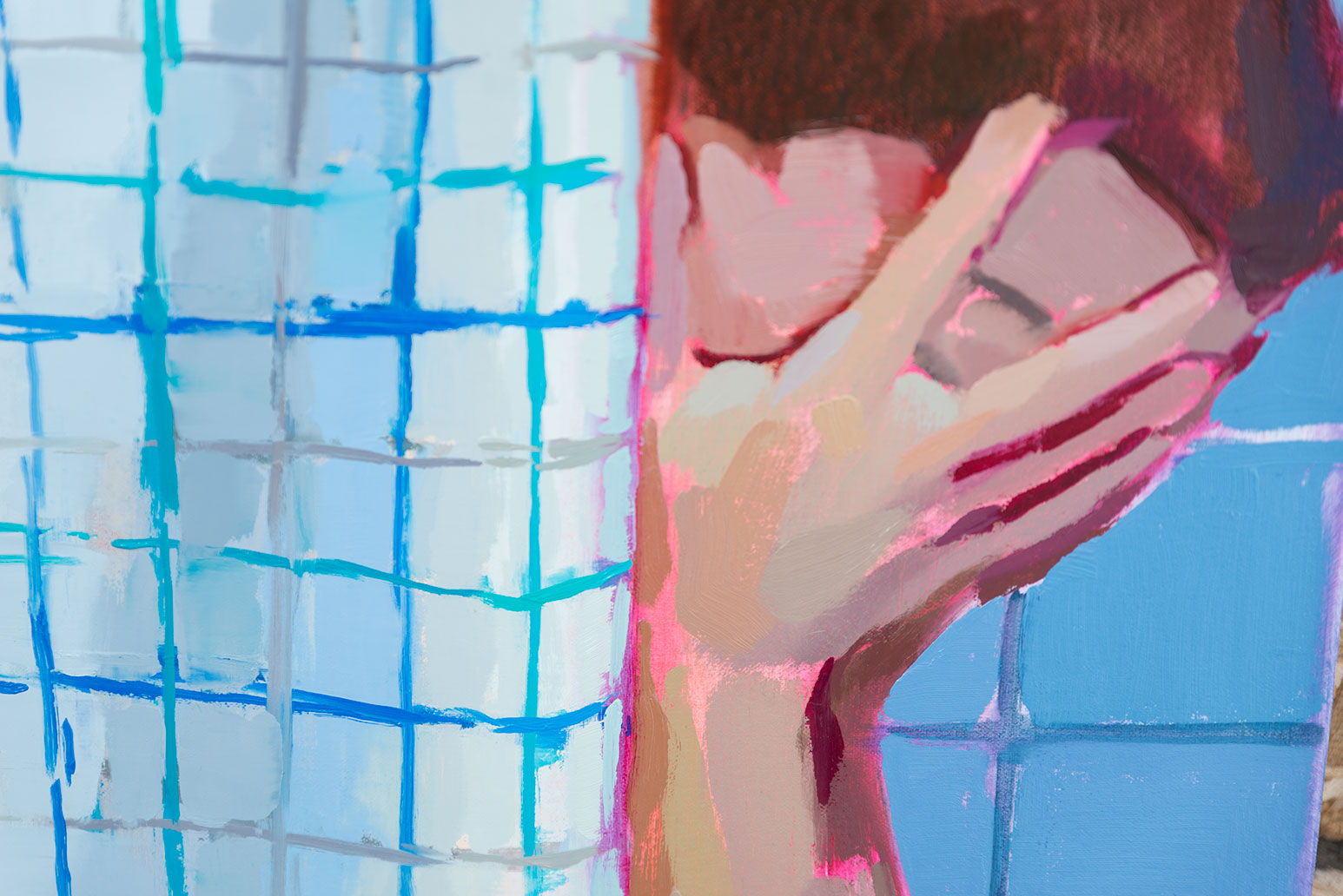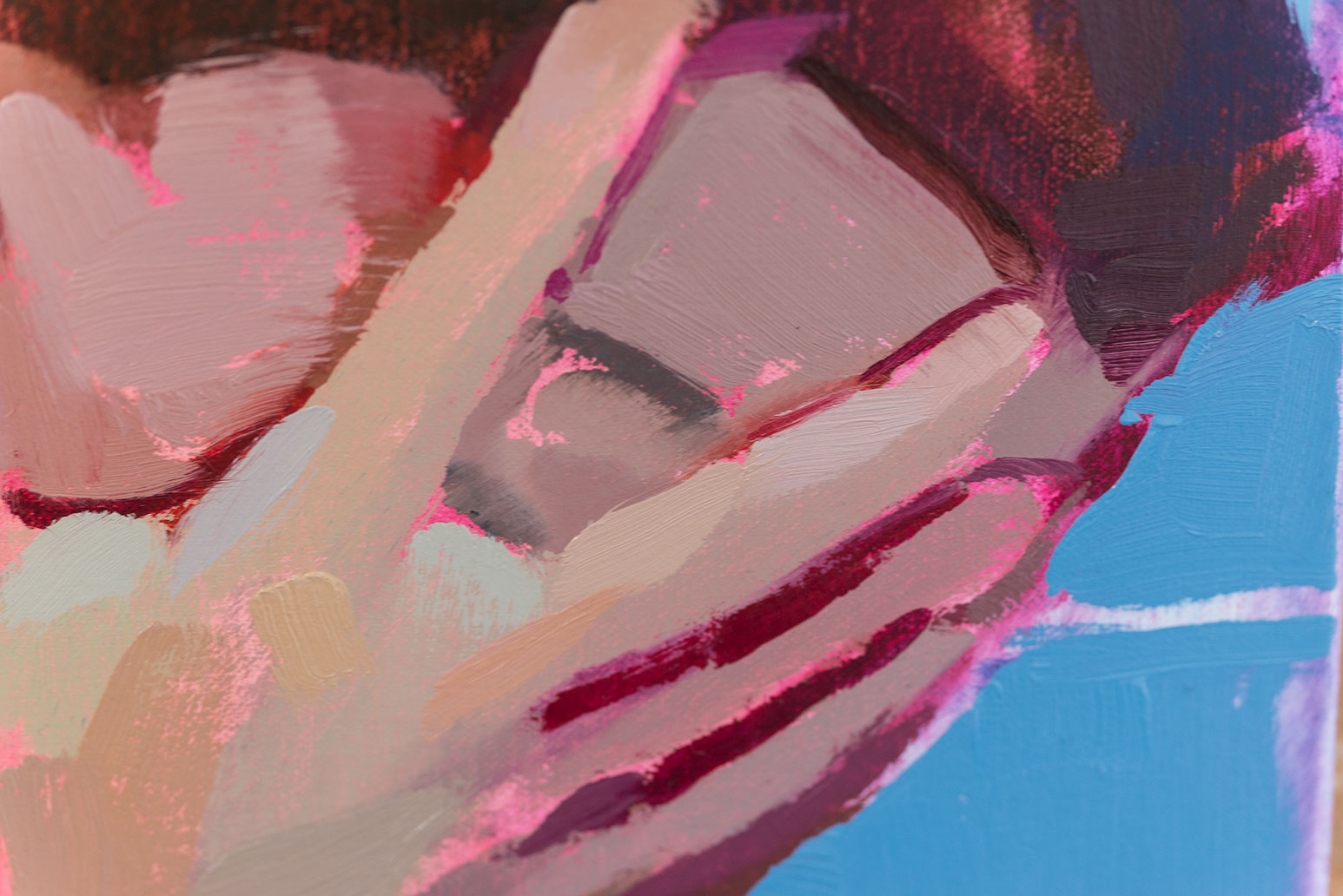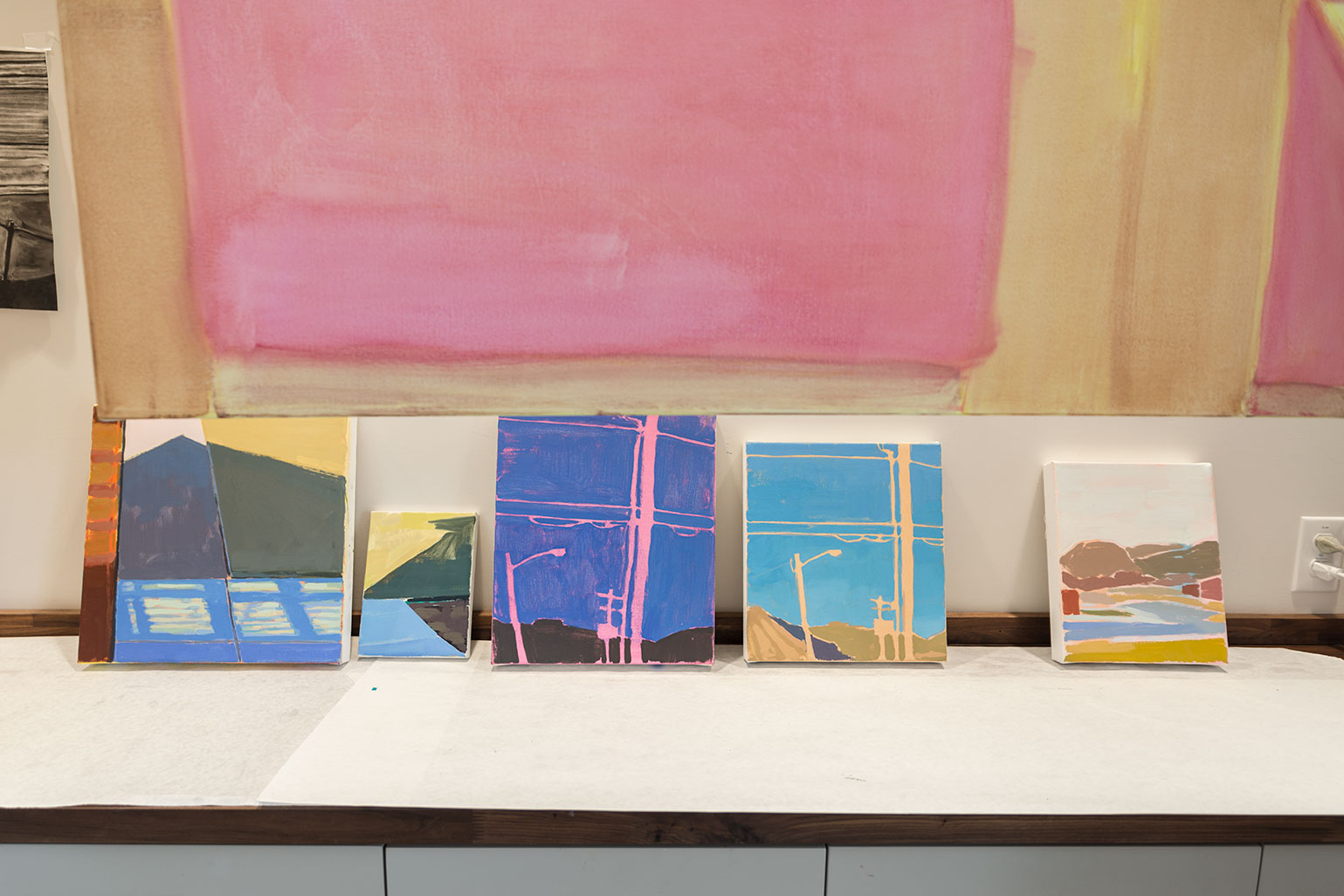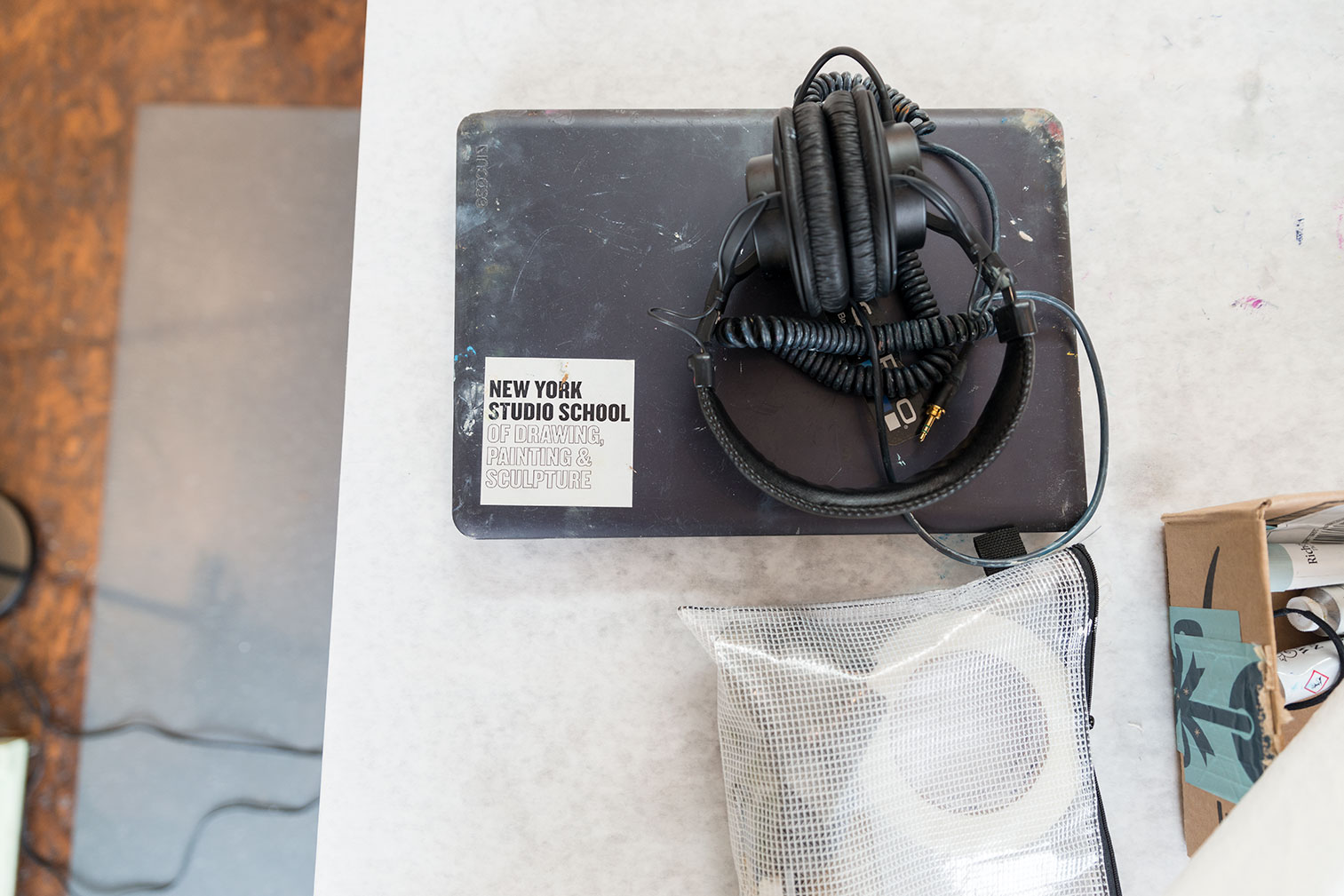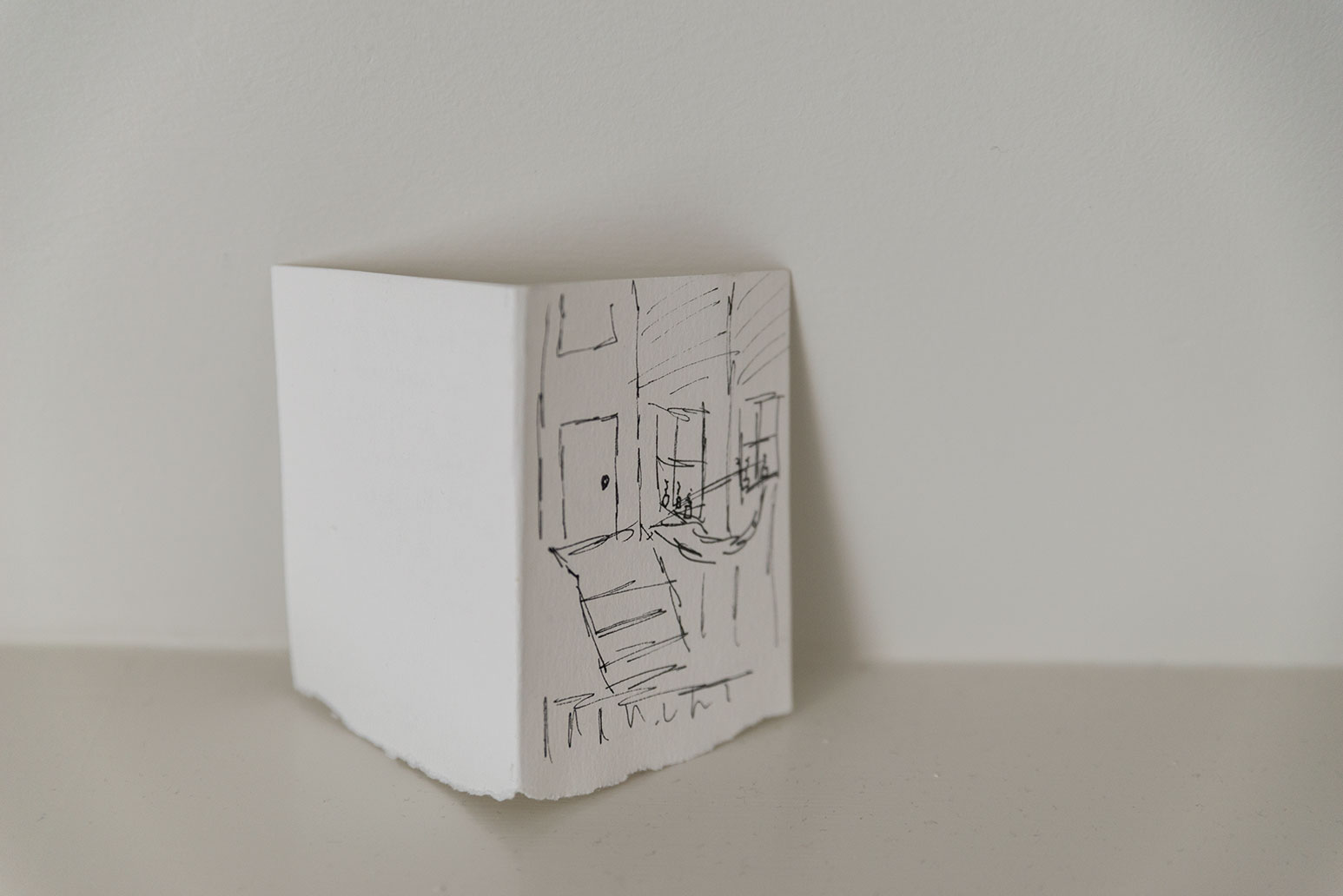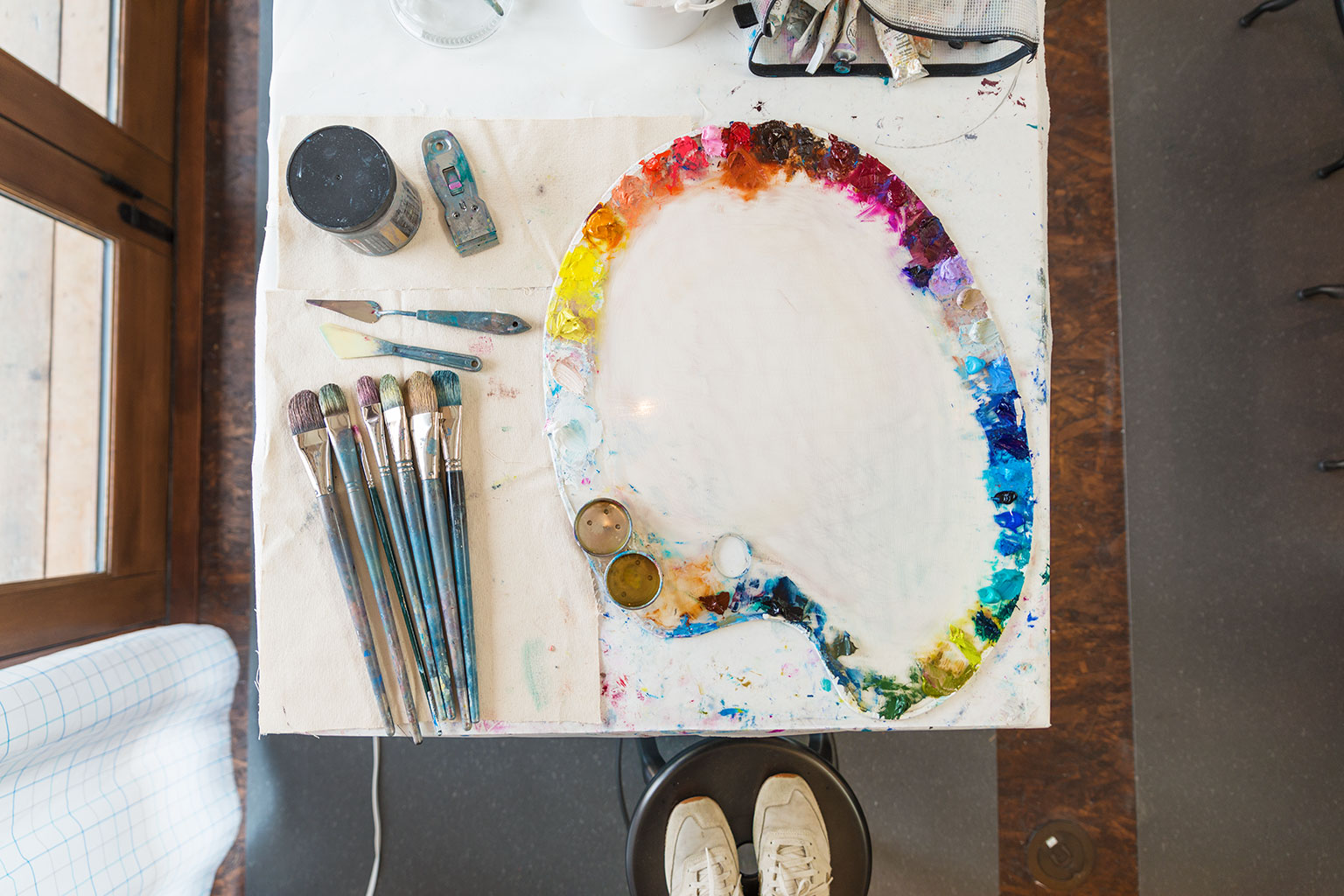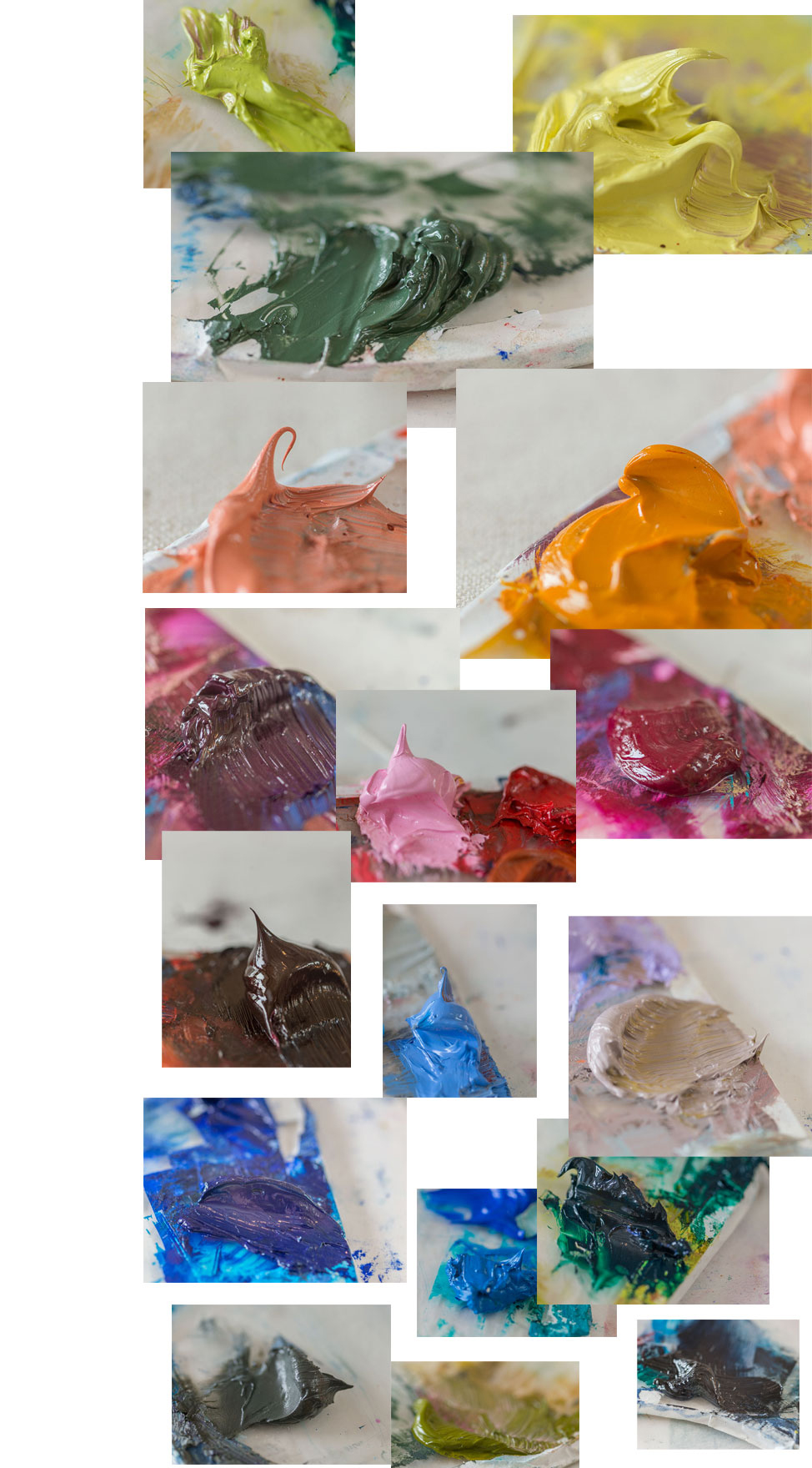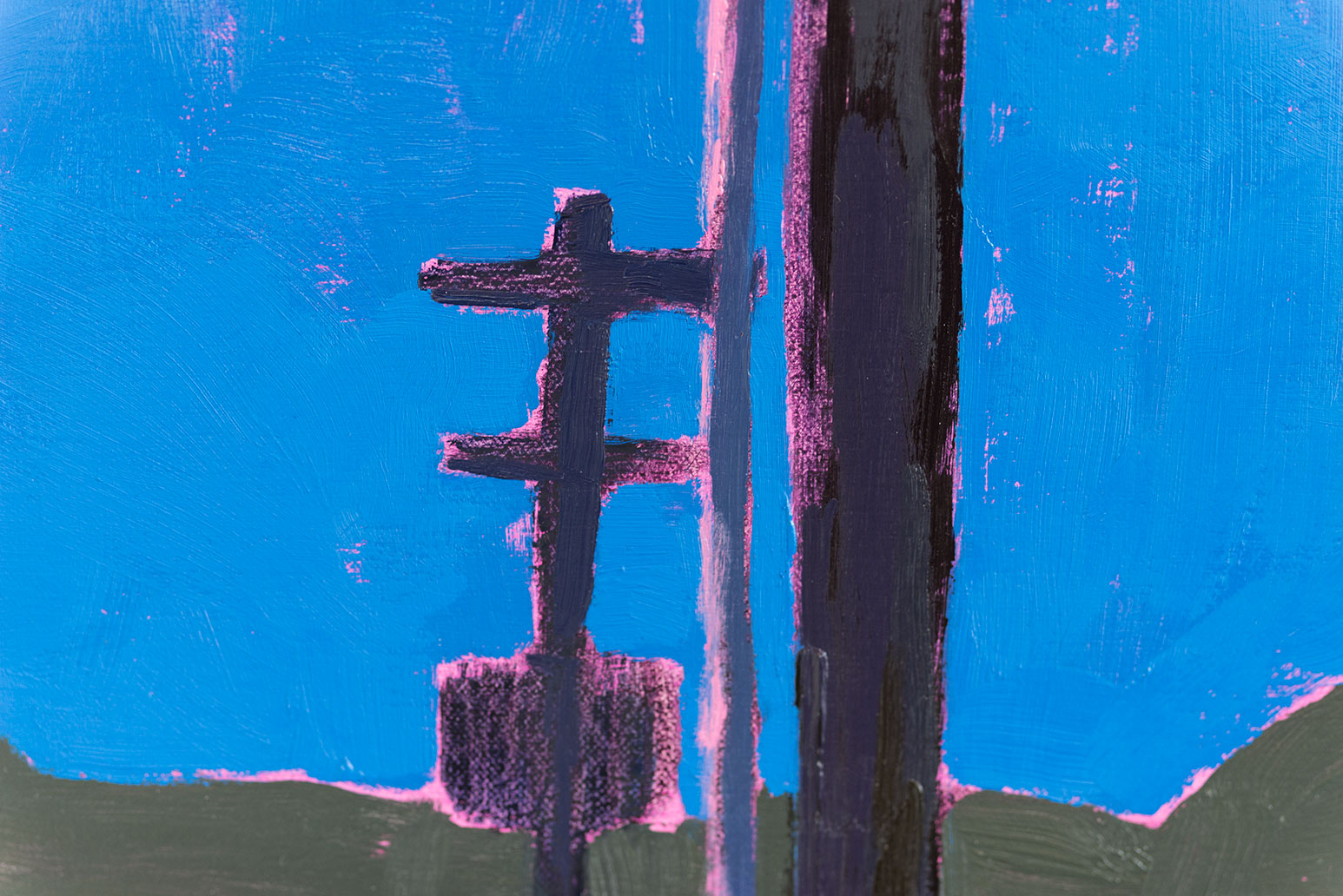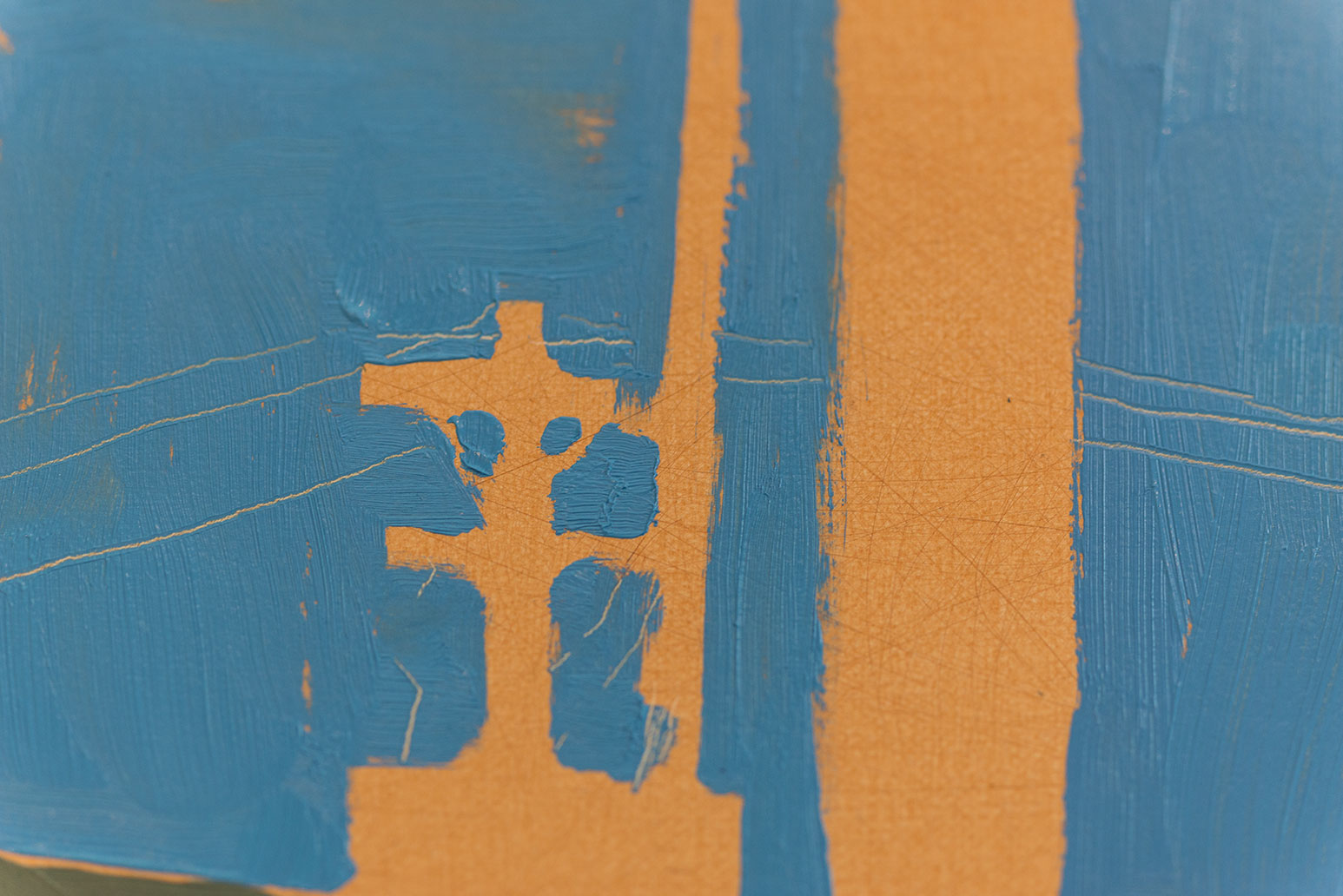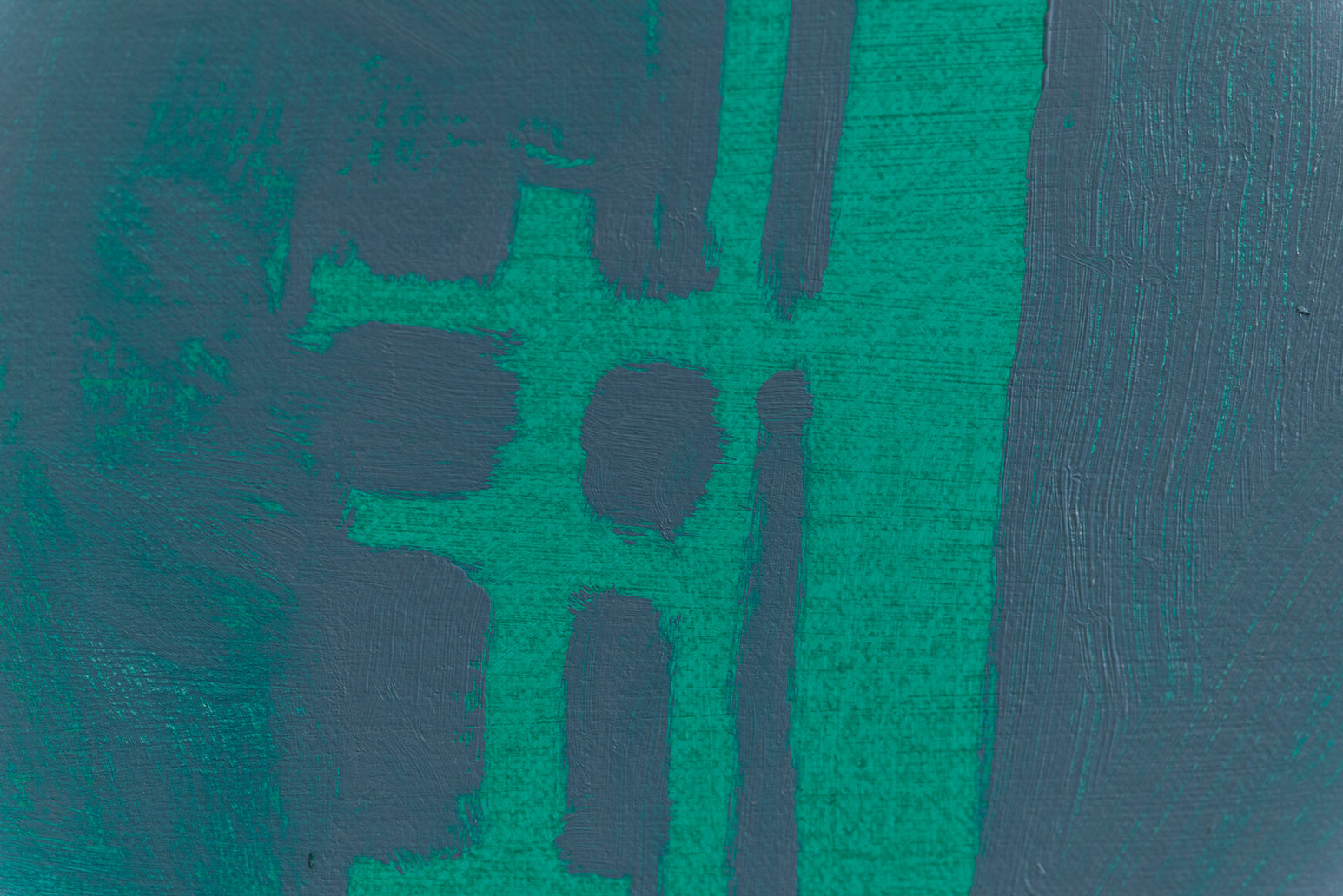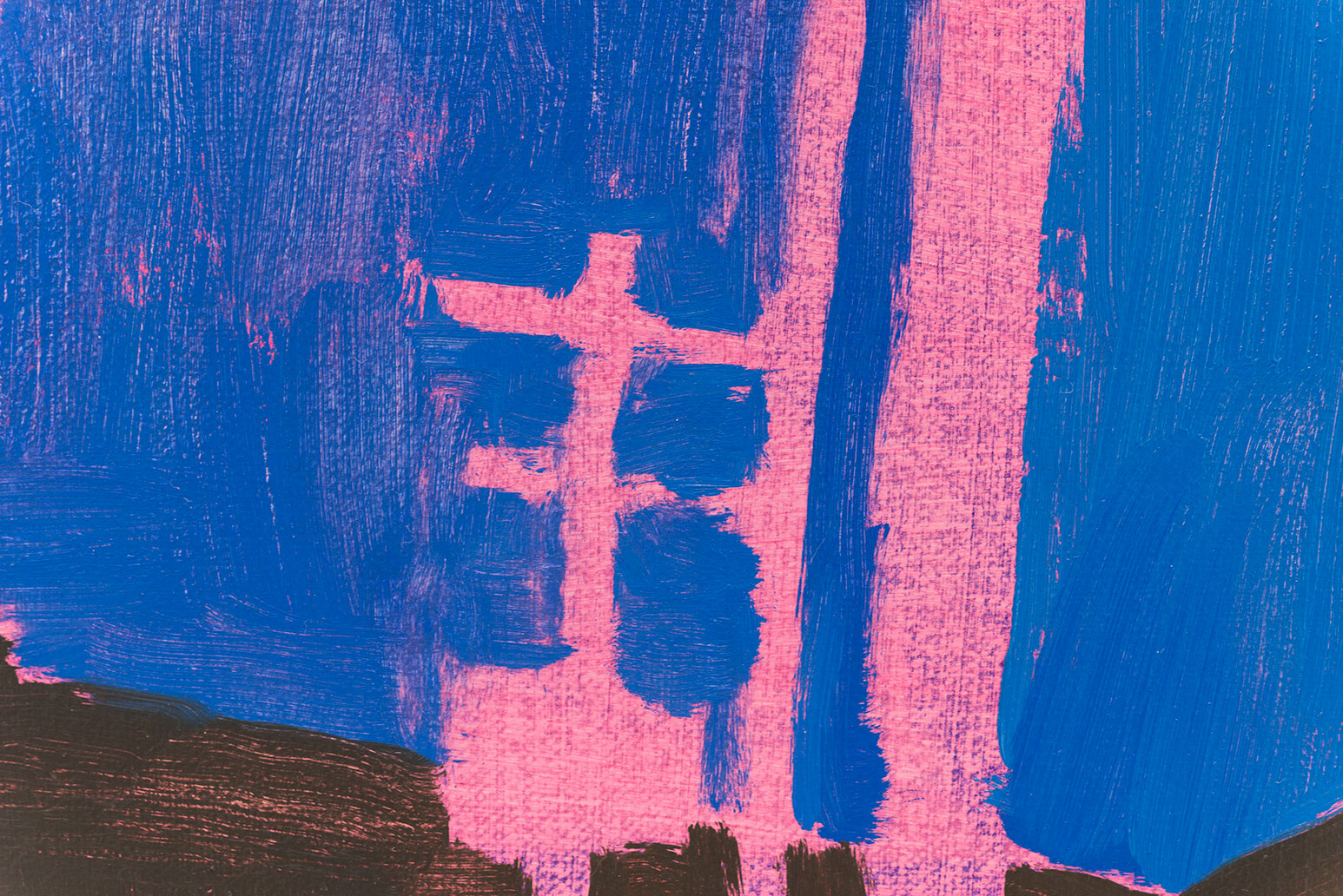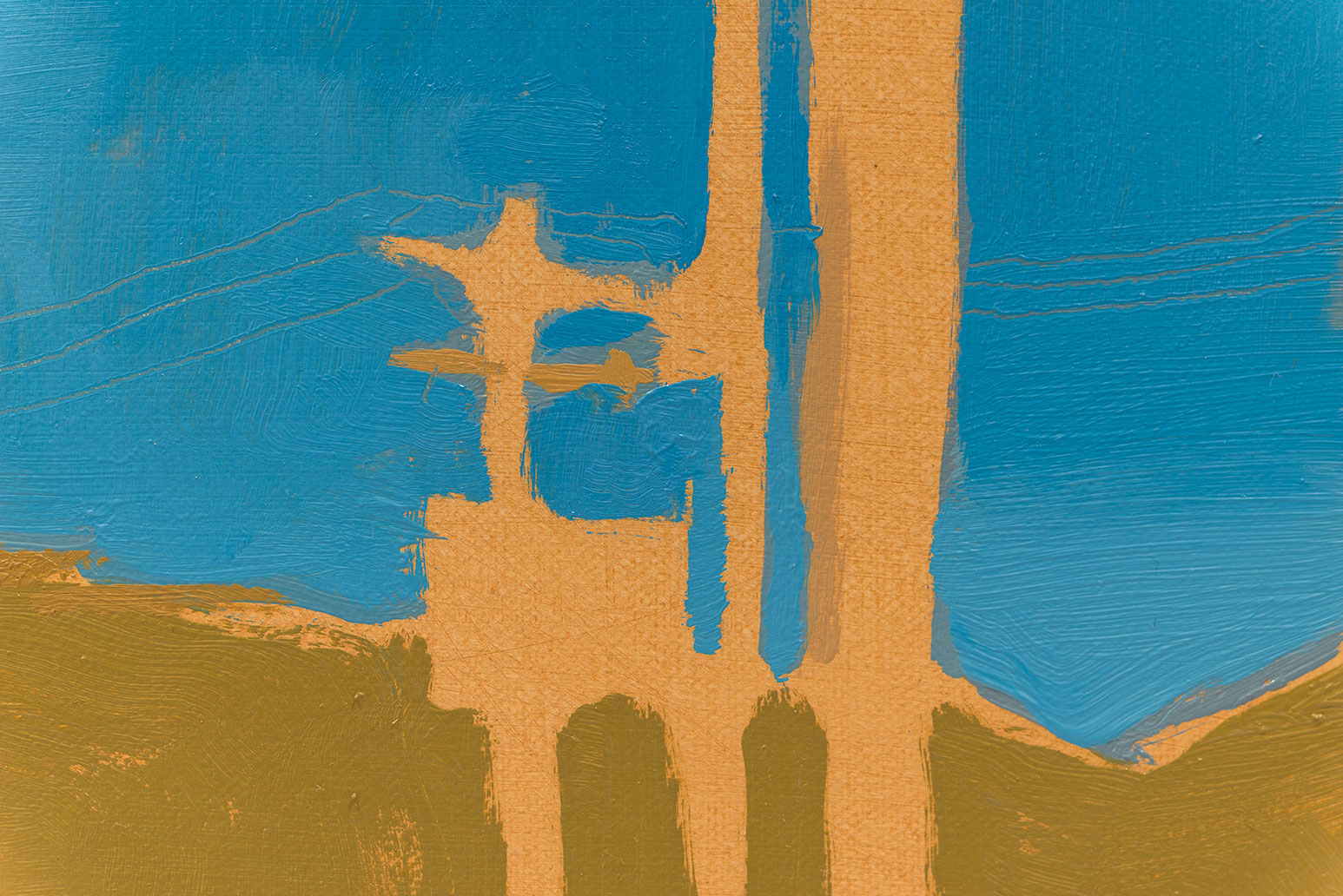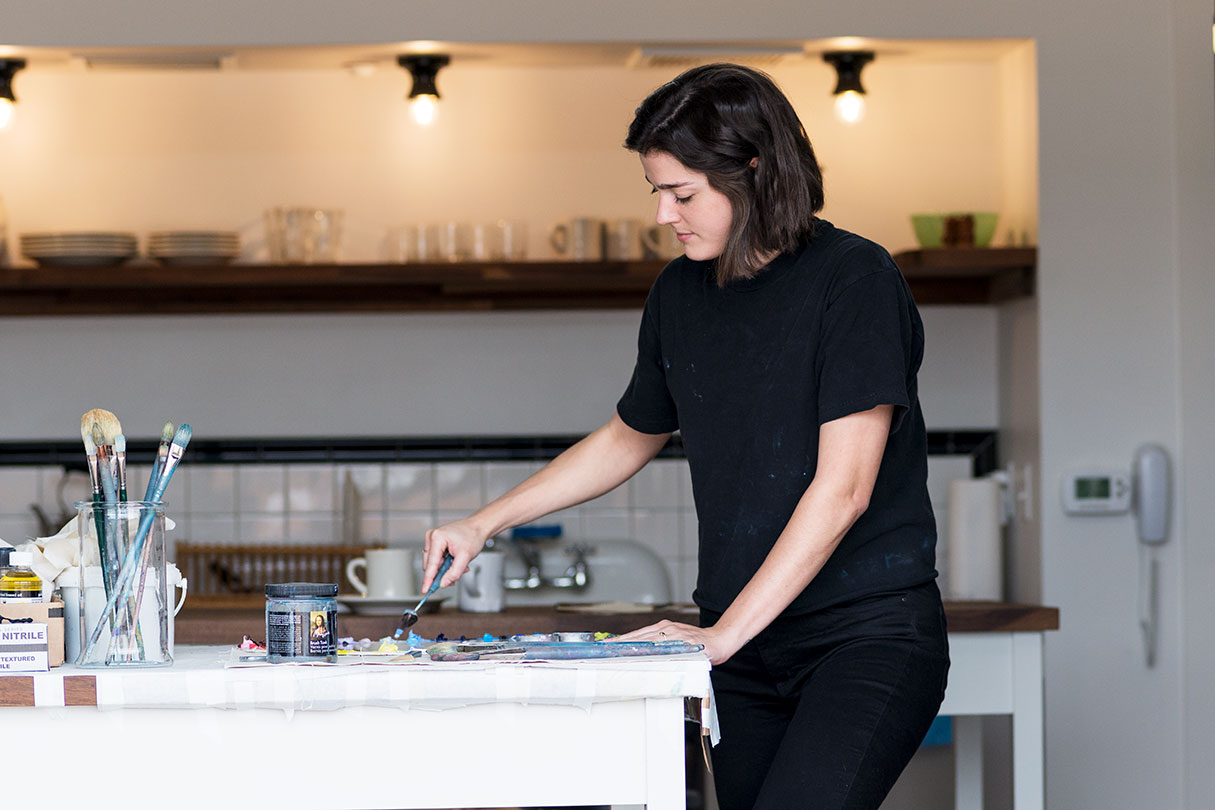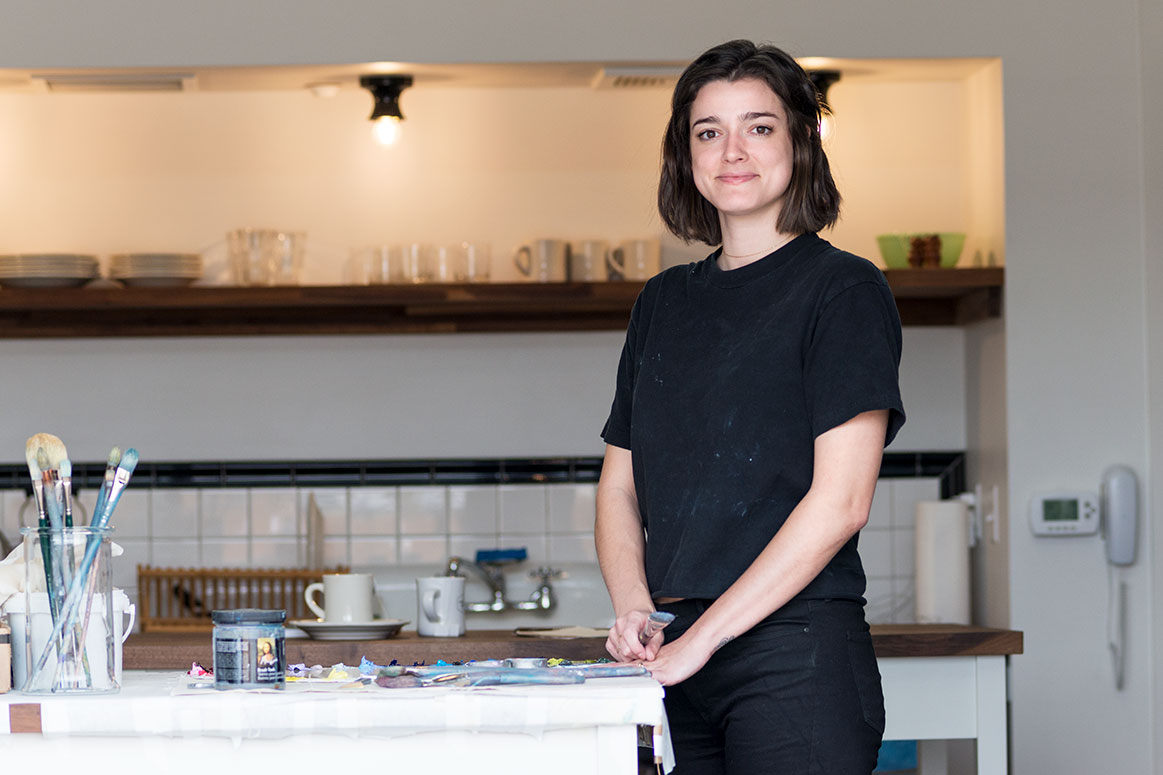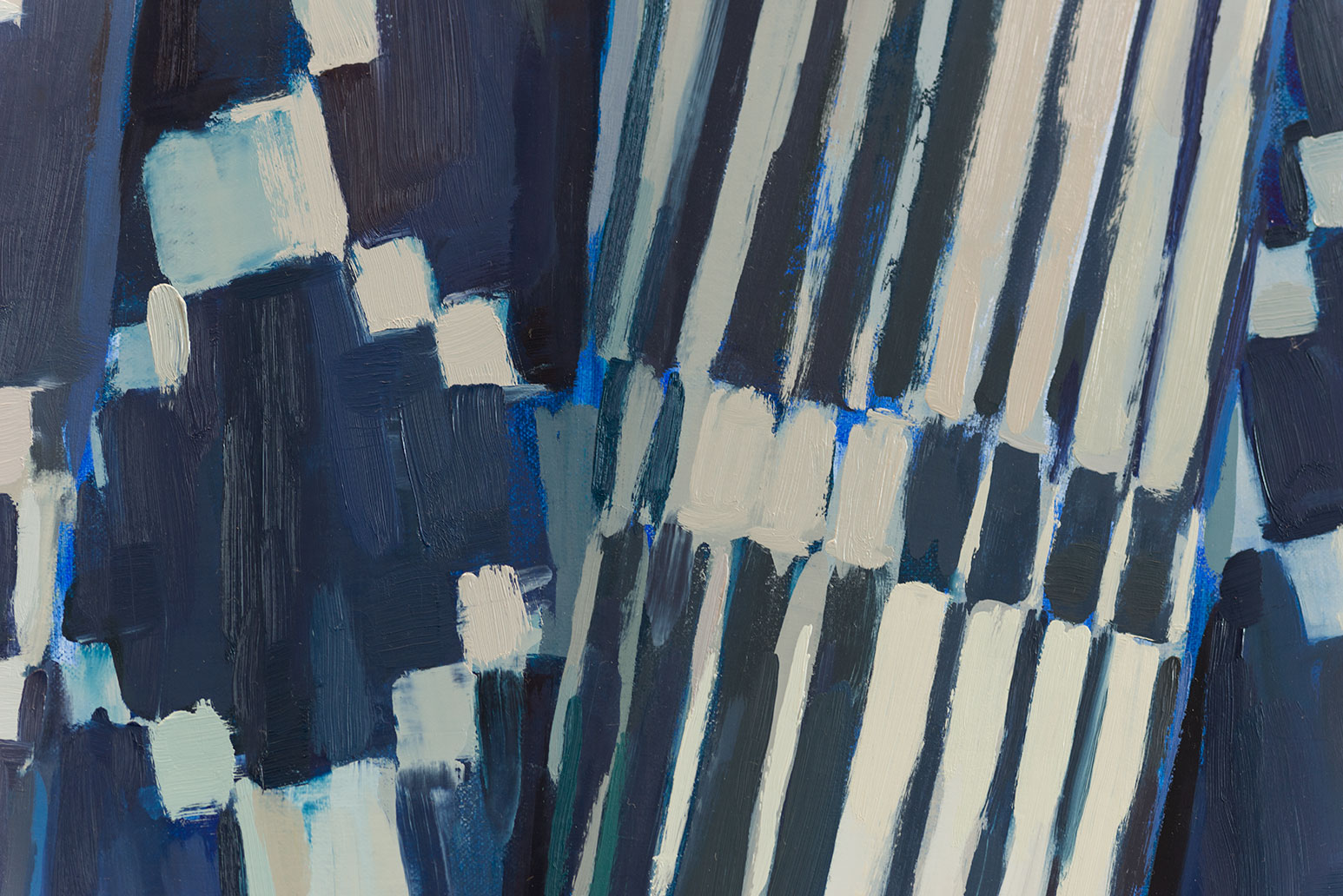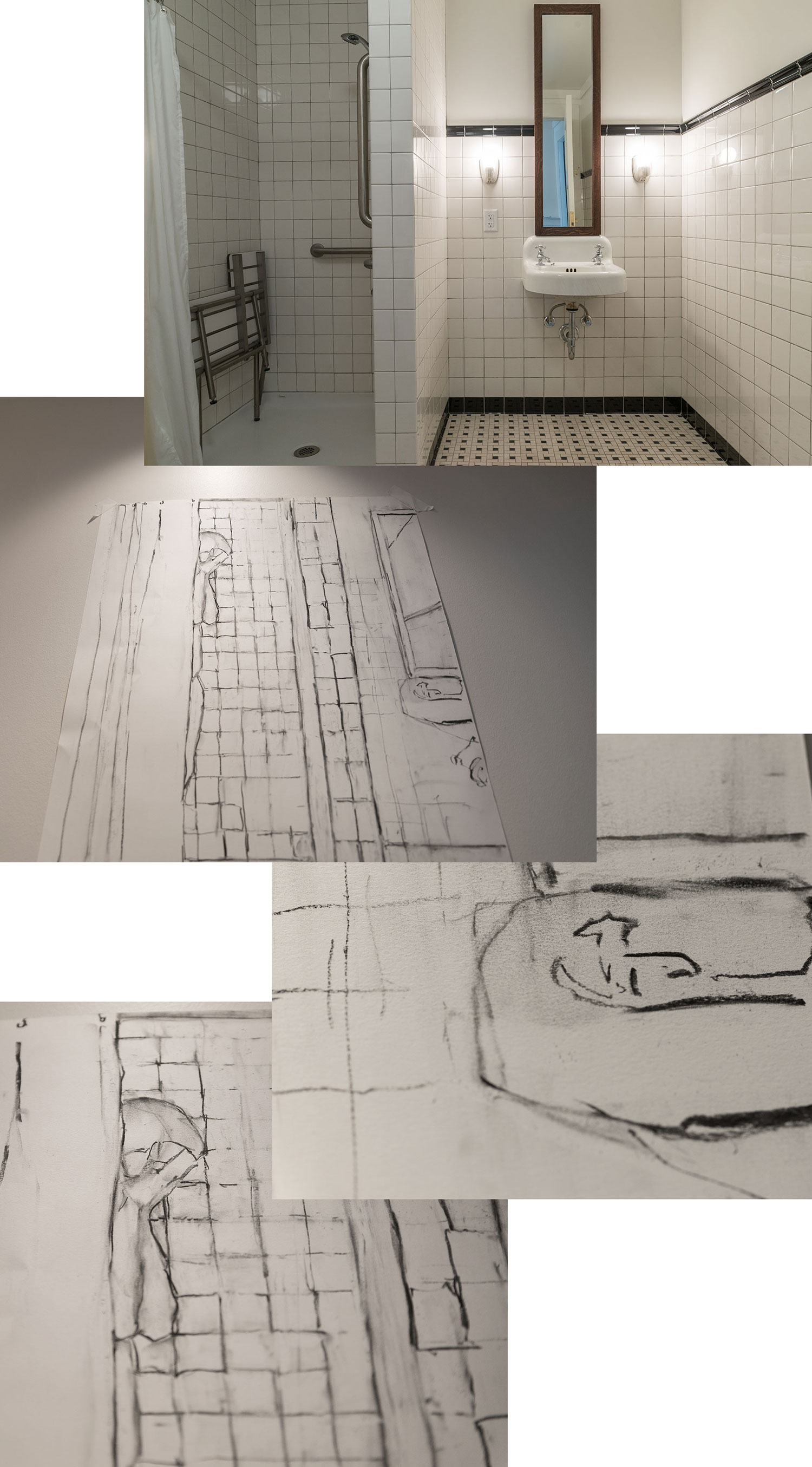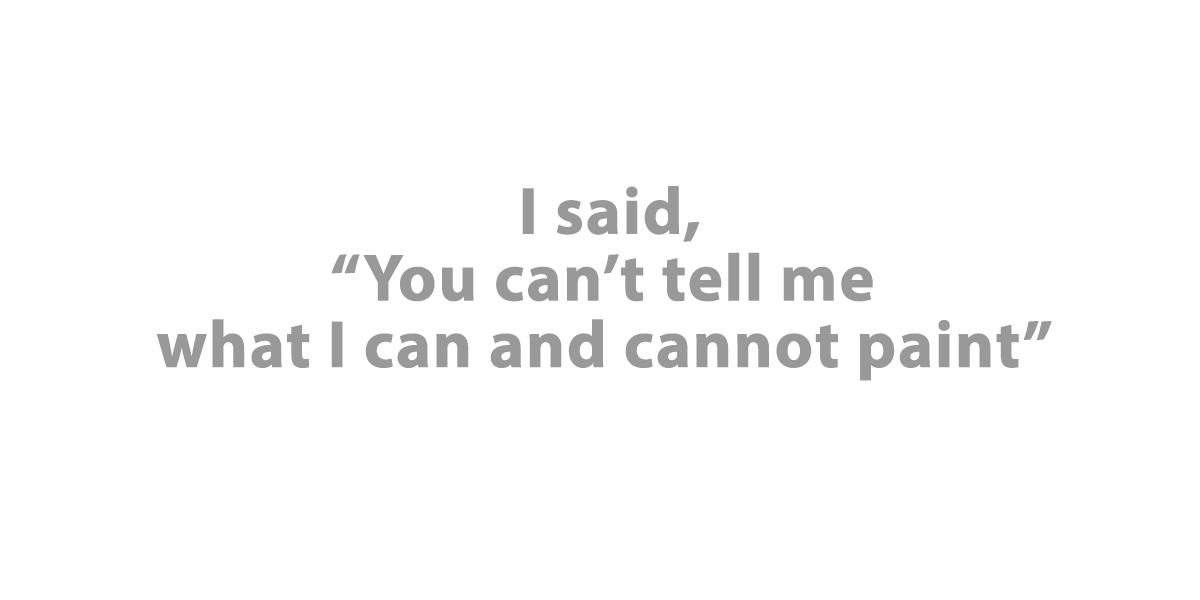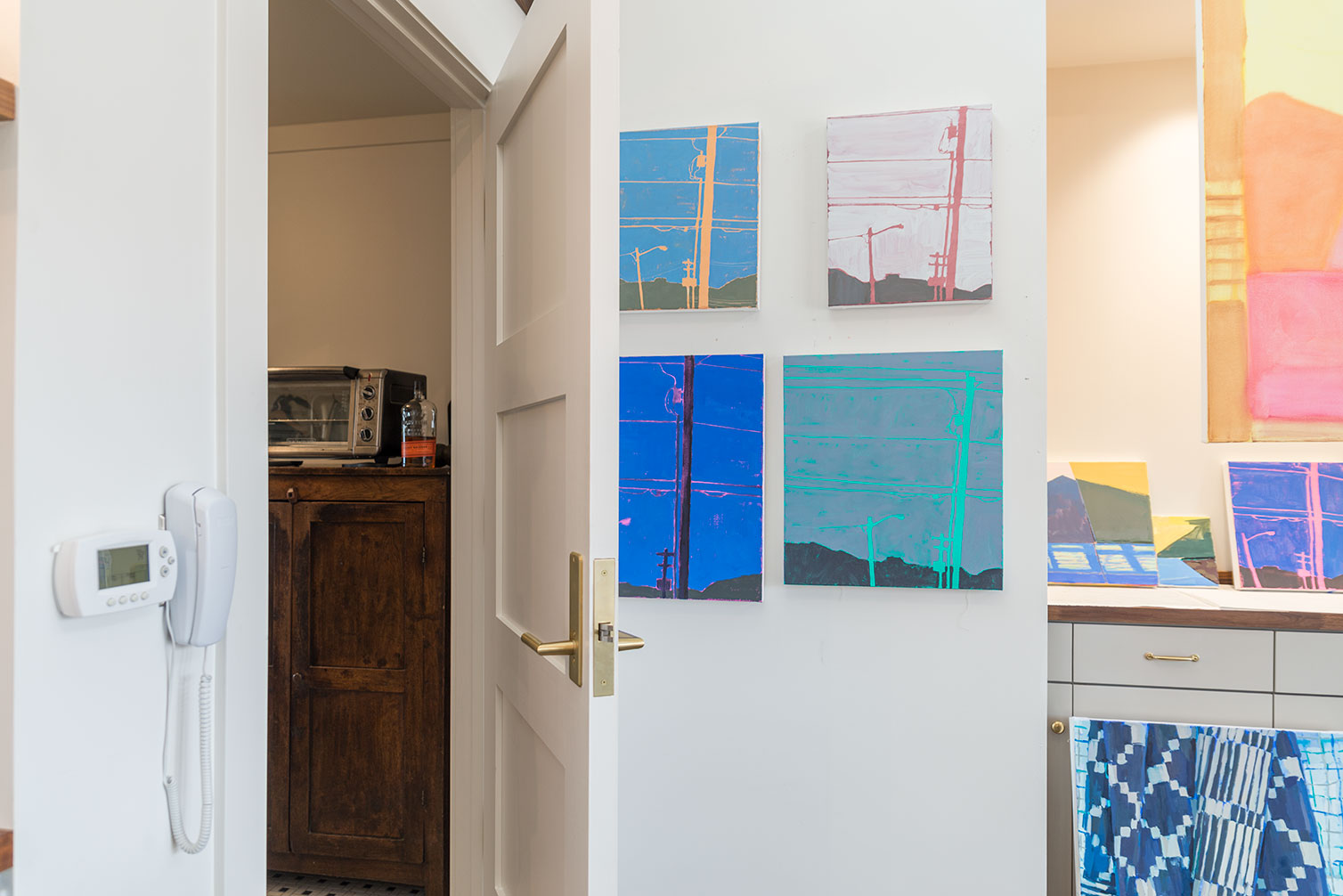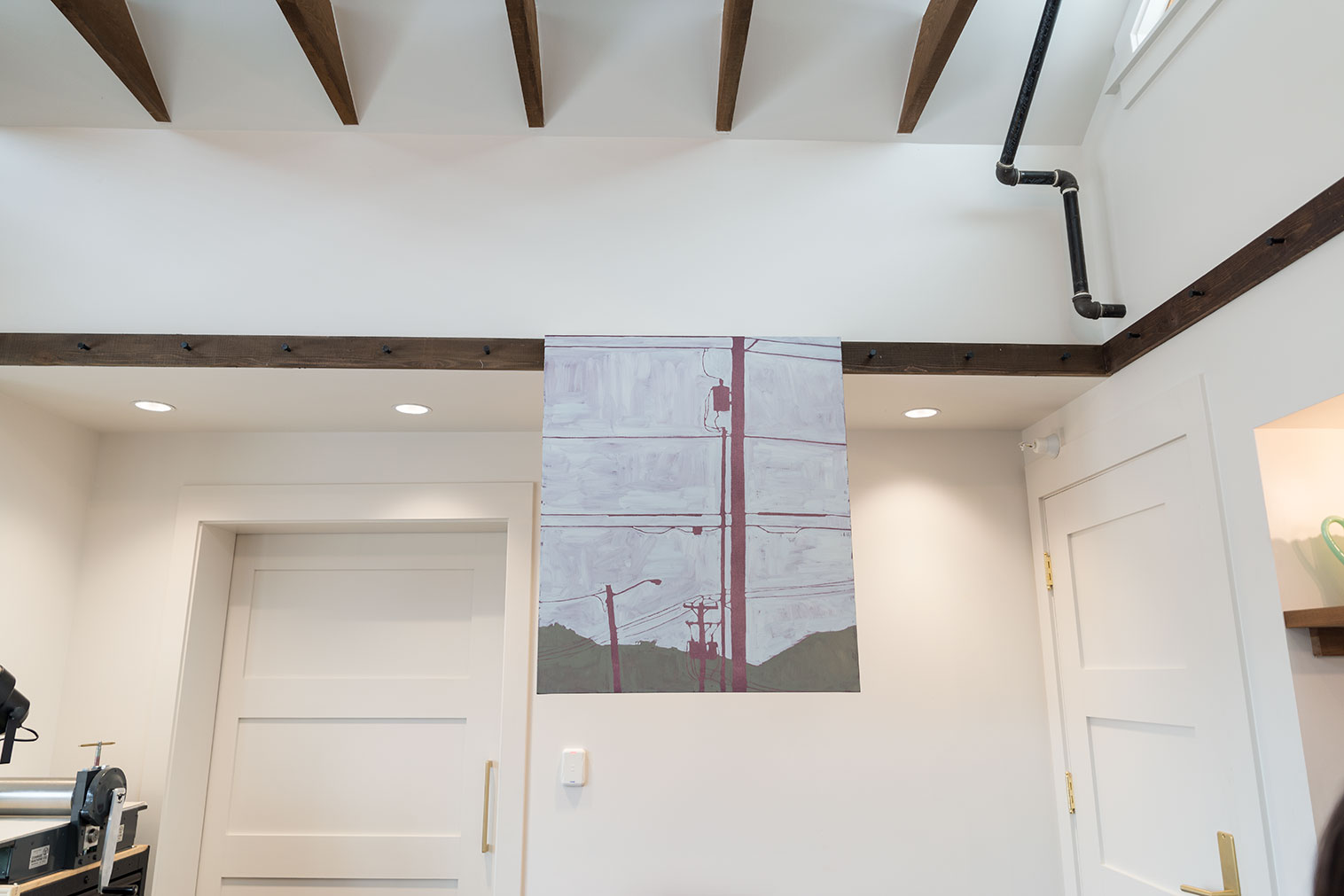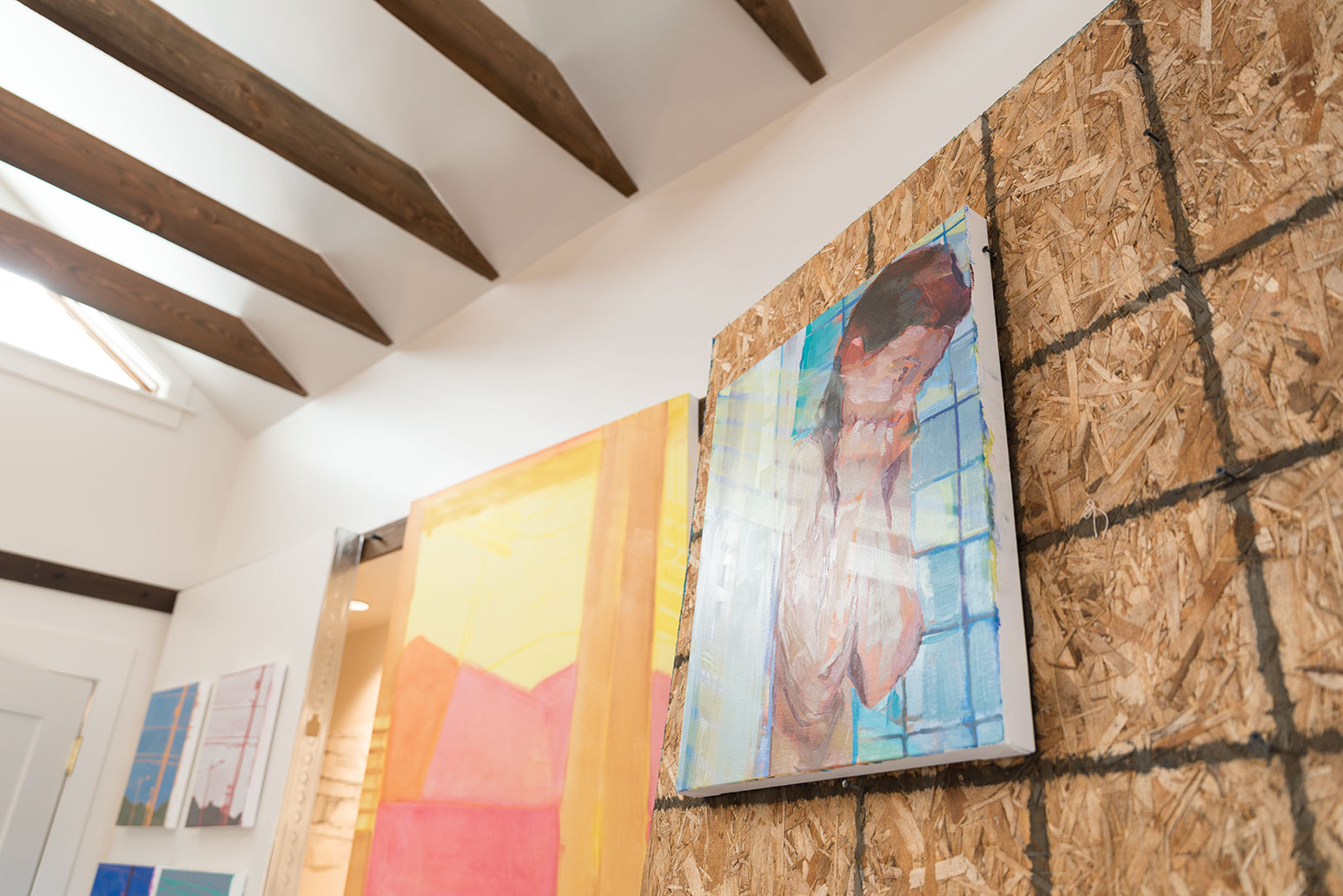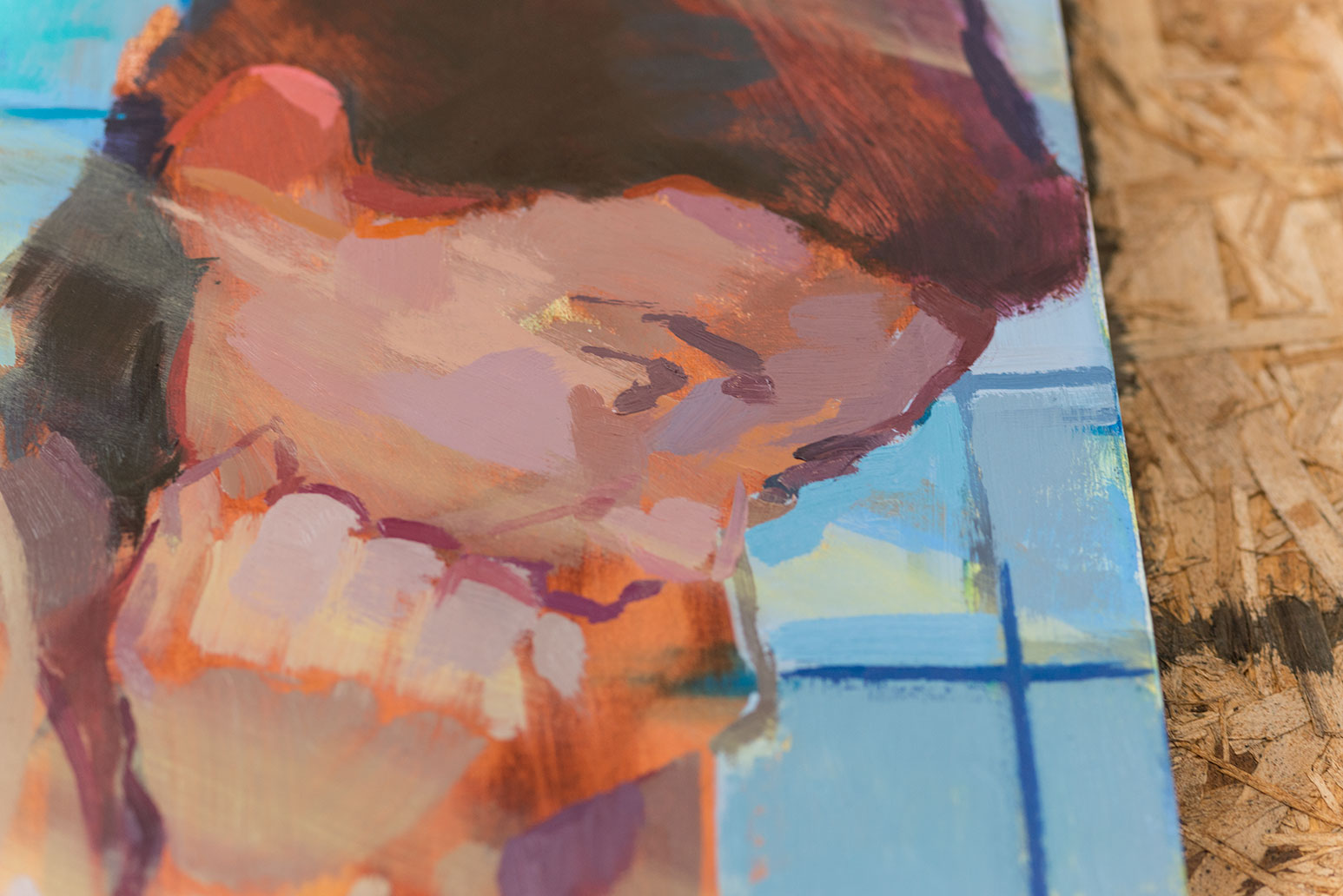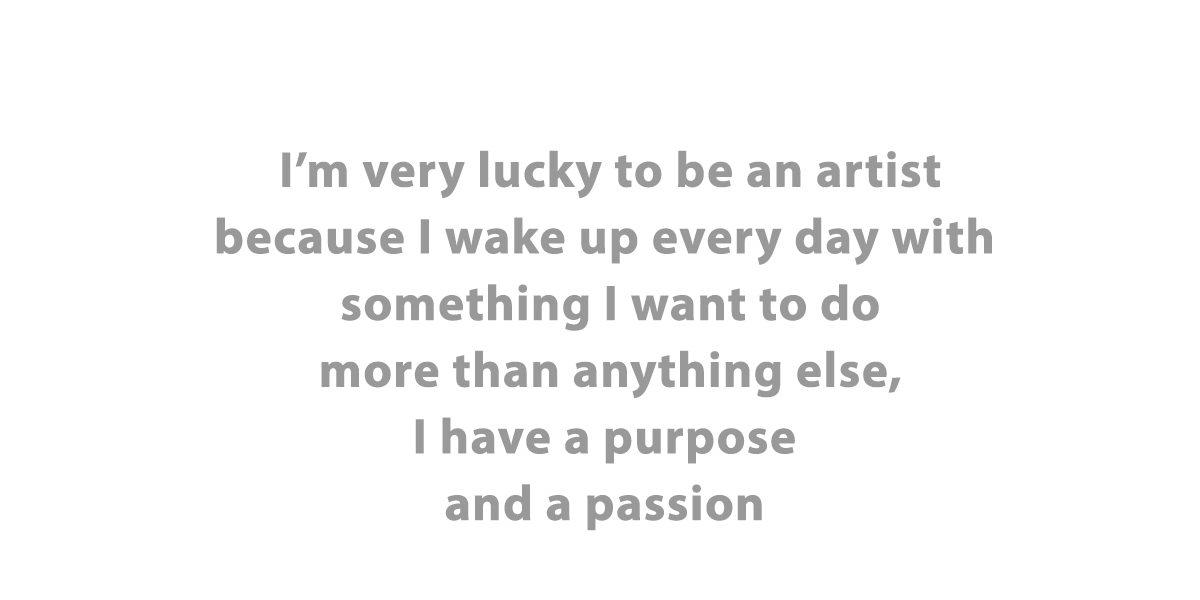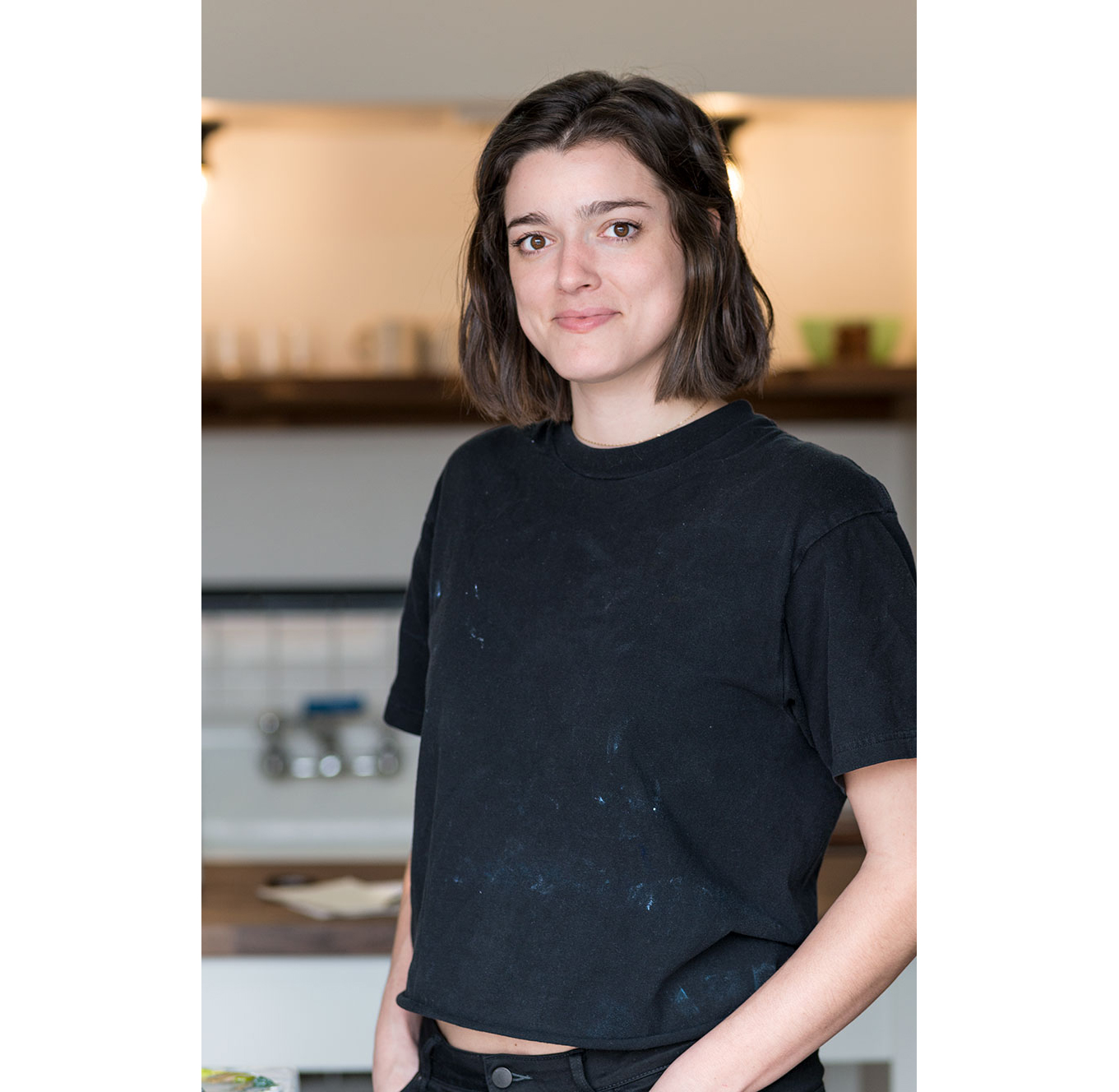Creators, Makers, & Doers: Rachel Rickert
Posted on 3/13/19 by Brooke Burton
Interview & Photography by Brooke Burton ©Boise City Department of Arts & History
Rachel Rickert, artist in residence at the James Castle House, is a painter following her intuition, capturing moments as they happen: a shoe drops, a shadow shifts, or a hair falls to the floor. She draws out time, slowing it down to understand the subtle shifts in her point of view and perception of meaning. Rachel looks to herself and immediate surroundings as subject and vehicle to draw out and magnify themes in her interior life: doubt, fear, and the small victories that characterize everyday moments. Rachel describes herself as a homebody, seeking out security, a sense of belonging, and a place to call home as a shield against the terror and thrill of facing the world outside us and of letting someone into yours.
You live and work in Brooklyn? I saw your bus pass out on the ledge [laughter] How is your experience of the Boise public transit system? Very different. Quiet. First of all, having the bus on the corner is very comforting because my bus at home is right on the corner. In New York, you are smashed up against people constantly. There’s this weird loneliness when you’re physically so close to other people. Everyone is doing their best to sort of deny the presence of everyone around them, like, if someone is acting out or doing something crazy in the street, no one will acknowledge it. It’s very different here. People acknowledge each other.
They look at you in the eye?
Yeah. And they say, “Hello.” People strike up conversations. In New York, I realized you’re so trained to be suspicious or expecting the worst; it’s really refreshing to be in a place where that is the opposite. People seem to assume the best and have genuine interest in each other. I’ll be grocery shopping and someone will strike up a conversation; at first I was really sort of startled by it, like “What do you want?”
You keep your guard up?
I don’t realize how bad New York is until I leave it. This is a nice change.
How did you end up in Brooklyn?
I grew up in Maryland, right outside of D.C., then I went to undergrad at “WashU” in St. Louis; that was my first taste of a different way of life. I loved my time there, but at the time the program was a little anti-painting; I had to constantly defend it as a relevant medium. It was great, actually, because it strengthened my love for painting and it allowed me to develop a way to speak about my concepts—not just the materials or the images. After graduating, I got into a residency at a place called Brooklyn Art Space—it’s now called Trestle, and it is a reduced-rate studio residency. My older sister lived in Brooklyn and one of her roommates was moving out. So, I had an apartment and I had a place to paint.
It’s good to already know someone in a new city.
I don’t think I would have moved there if she wasn’t already there. I didn’t have a job yet and hadn’t figured out the details.
Were your parents reluctant about you going into art?
They were. Looking back. I had to prove to them that it was not a casual interest, that it’s a passion and has a purpose. Undergrad was a compromise in that I went to a larger university, but I was still able to study art.
You wanted to go to an arts-only school, and your parents said. . .
They said, “No.”
[Laughs]
They are reasonable people and they wanted me to have a good background. I am happy that they pushed me towards that decision. I loved my undergrad experience because it was well-rounded. I minored in writing. I love writing and it’s a large part of my practice now.
Were you intimidated to move to Brooklyn for the residency?
When I moved to New York, I was terrified, I was very lost, it was a very anxious year. I didn’t have a community, a safety net within the art world. Someone in the residency had just graduated from the New York Studio School and was telling me about [their experience there]—it seemed like the perfect place for me. The school is focused on painting and that’s what I really crave—to be pushed as a painter. After one year I applied to the New York Studio School and was lucky enough to get in and receive a scholarship that allowed me to support myself through grad school.
Were you determined to do it all on your own, financially speaking?
Yeah, I mean, they weren’t offering, so that was also part of it. I didn’t want to tell my parents that I was applying because I didn’t want them to think I expected help, because it was very clear after graduating college, you know, “You’re doing this on your own. You want to be an artist, you have to figure it out.” There were definitely some rocky times and my parents have been extremely supportive. If there were times that rent was going to be hard for me to make, my mom might say, “You know, I really wanted to buy that painting.”
Oh—
So, they would support it in their own way, because I was also pretty stubborn—
About taking a gift? You are stubborn.
I am.
How many paintings do they own?
A lot. It’s funny, every time I come home, my mom wants to hang up something new, I have to sell my work so now, I’m, “No, no, this is—someone else needs to buy this; that’s how I support myself.”
That’s funny. Yes, my mother has purchased artwork from me in order to help me break even. God bless our moms.
I know. It’s really great that they would do that for me, and I was lucky to have that scholarship for the Studio School; it was a full-tuition scholarship.
Wow! What a gift! What do you do now?
I’m the exhibitions coordinator at the New York Studio School; I organize the art shows— which is actually how I found out about the James Castle House. When I was in grad school, Graham Nickson, our dean, took us to the William Louis-Dreyfus Collection in upstate New York; he has a lot of James Castle’s work and that was my first introduction. I was so drawn to his images that, I felt, showed the potential in our worlds—the mystery, and the metaphor that our domestic spaces can hold. It taught me not to overlook anything, that you can find meaning in your own spaces.
That you don’t have to go far from home to find the meaning you’re looking for? We are starting to sound like Dorothy.
Exactly. The most ordinary thing can create an extraordinary, impactful piece of artwork. Anyway, Karen Wilkin, a mentor of mine, proposed a show of James Castle’s work, and I was immediately interested. It was over a year of organizing and was originally going to just be work from the William Louis-Dreyfus Collection. But the James Castle Collection and Archive contacted us and offered to be involved, which was incredible. We are a nonprofit art school; we do not have a budget, everything is funded externally. They sent us some incredible pieces, some of his drawing materials, and two books. That’s how I found out about the James Castle House and this residency.
We talked a little bit earlier about painting objects, spaces, and people as a means of feeling some kind of attachment or control. Could you talk more about that?
Yeah, it started with space, in New York you seek out space in kind of a desperate way. It’s very hard to find something that feels like yours in New York. I first lived in a four-bedroom apartment with six people; it never felt like home to me. It was a chaotic scene, and it was very hard to ever be alone but also hard to escape a feeling of loneliness. I think that’s a lot of New York. Also the chaos of the city can be very overwhelming. One of my jobs in grad school was a nanny, for a wonderful family, and they asked me if I would sublet the grandmother’s small studio apartment in the East Village. It was a one-room apartment—
Where was the grandmother?
She was retired, she had a little house upstate, but they didn’t want to give up the apartment. They wanted someone to live there and look after it so they asked me. It was the most affordable place I lived in New York and it was a fifteen-minute walk from my school.
How much was it?
I can’t even say, you’ll—I mean, it was—so, it was a couple hundred dollars less a month than the bedroom at my place in Bed-Stuy, with five roommates. And now I was living all by myself in the East Village in Manhattan.
That is too cool. Was the apartment full of all her furniture, belongings, dishes, and everything?
Yes. The only thing I had was my own bed and my clothes. It was very comforting for me to be a part of this family, and Sherry became a very comforting presence through her belongings. I lived there for four years and it was the first time that I felt like I had a home since I was a child. I had a space that was mine, that protected me, that held me—where I could be unselfconscious. I loved it and I became extremely attached to the apartment because of that.
Some of your paintings are not about interiors or objects; they’re you. You are the subject—we were talking about anxiety or insomnia. Do you think painting your figure in the body language of experienced anxiety could be a way to take control of that?
I think it’s a way to step back. Analyze myself. When I was living alone, I also became pretty obsessive, trying to be a voyeur in my own life, as if I could watch my private moments, like you said, to find a physical representation for some sort of internal feeling or emotion. I’m an over-thinker, I’m really in my own head. I became really obsessed with in-between moments, like, undressing, where you’re between states, or bathing; those extra-vulnerable moments. I think painting them is a way for me to understand. The great thing about being an artist is any [experience] you go through can feed your work.
Do you think wanting to hold onto the in-between moments, painting them, has something to do with a fear of loss? Or is it fear of never having?
That’s a good question. [Sighs] I think it’s about control. And potentially fear of loss. Controlling your expectations. It’s funny, because I’m a homebody. I like comforting routines, I like knowing what to expect. I like having a sense of belonging and a purpose and a place or a person I belong with that feels like home. But with painting, painting for me is all unknown; there’s no clear path. It’s all about making decisions and confronting the unknown. It feels risky in a way, but here I can, in fact, be thrilled by that instead of terrified of it.
I saw on your website certain subjects get painted over and over again, almost like observing a thought process as you narrow your focus in on one detail.
I get very obsessed with things in my paintings, and I paint the same things over and over. I’m interested in the different ways I can capture the same thing and also [observe] what stays consistent.
I was looking at the paintings of your hand, from the hair-cutting image. Where you are kind of grabbing your fiancé’s, John, head.
It’s a grip.
It’s a grip; thank you!
I was thinking about Artemisia Gentileschi’s painting, Judith Slaying Holofernes, a feminist painting at the time. It’s of a woman gripping a head and in her other hand she holds the blade. Of course her painting has a much darker tone [than mine] because the woman is decapitating the man, but I’ve been thinking about that with my grip and the blade in my other hand.
Both paintings are depicting the same subjects.
In my work, instead of it being an unconsensual act, it’s, you know, this person who’s giving themselves over. He’s not even looking; he doesn’t know what’s going on. I’m the one with the control—even though I have the blade, the grip, it’s sort of a sweet resignation of power.
Your work is very much about interior life, because the scene that you described of gripping the head and the blade has meaning made from the intention of those two people and the agreement that they’ve made. Or not made.
Yes. It’s about the exchange of power.
Has anyone ever told you that you’re intense?
[Laughs] Yeah.
You’re an introvert and you have that poetic side of your mind constantly looking for deeper meaning, “Why does the view of an open door seem happy to me today, when yesterday, it seemed sad?”
Yeah, it’s almost too much. I can’t get out of my own head. It’s hard for me to live in the moment. With painting, it’s the one time in my life I feel like I’m truly living in the moment. I’m immediately engaged with what I’m doing right then. I’m not thinking about anything else.
Is there a sense of freedom? Relief?
I’m not crippled by the inaction that can happen in a lot of other parts of my life. I think that’s why I’m obsessed with painting the shower. Ignorance is bliss—but out in the world I feel stripped bare, but in the shower it’s just me and my thoughts.
People do a lot of thinking in the shower.
Sure—you’re reviewing the day’s actions or you’re thinking about what’s to come. Are you nervous about something? Are you regretting something? Are you reliving a moment, good or bad? Sometimes you don’t want to leave the shower because it means, “All right, now I’m ready to confront what’s next.” Like with dressing or undressing and facing the closet, thinking about having nothing to wear. It’s not about the clothes itself; it’s about not wanting to take that necessary step to leave. The closet is a bridge from the interior to the exterior. It’s that thing you have to do in order to confront the world.
Pajamas mean you don’t have to confront the world. I love my pajamas. How does John feel about being painted?
[Laughs] He was a reluctant muse at first. It was very new for us to navigate. I was thrilled by this new subject matter and it was new for me to gaze on someone else and to want to paint our life together. I like painting about things as they’re unfolding—a shoe falls on the floor one day; “Oh, that’s going to show up in the painting tomorrow.” When I’m painting myself, it is very thrilling, but for someone else it can be almost nerve-wracking—“Is that going to be painted? —are you going to paint that?” It was new for us to understand what boundaries he had. I never thought about, you know, painting myself, using my body. It didn’t scare me because it is just a vehicle for my painting—using my body as a stand-in. They’re not direct self-portraits, so I didn’t feel so exposed. But, for him, his comfort level with various levels of exposure is different.
He’s not thinking “My body is a stand-in.” He’s thinking “That’s MY body!”
Exactly. He said, “You know—you’re so brave for painting yourself and doing what you’re doing. But I’m not that brave. And I don’t have to be.” Which is true. It was a powerful moment, because the fact that he thinks I’m brave is huge for me. I think he’s so brave; he’s a rock-climber, a mountaineer; he does really extreme, brave things that I’m too terrified to do, but it helped me to understand that I am brave, in a different sort of way. It was clumsy at first, but now I think he’s pretty excited.
Did you have a moment where you asked his permission, or did you just start painting him?
I sort of just started and he had to say, “Hold on a minute. Let’s set some guidelines here.” Especially for the more intimate paintings.
How did you take that?
I didn’t take it well. I was really stubborn about it.
[Laughs]
I said, “You can’t tell me what I can and cannot paint.” He said, “Well, if you’re using my body in these paintings, I get to have a say.” It took me some time to realize that there’s this other person involved. I’ve been, you know, painting myself on my own and so suddenly painting somebody else is new and having a muse, this other character, in the paintings, who’s also somebody I love and respect. But I’m not used to having to ask permission to do anything in a painting.
“No one can tell me what I can and cannot paint.” I kind of love that. What would you say to people who see one of your paintings using your figure and nudity, if they question whether eroticism is part of the work?
I think that [interpretation] is about someone’s own personal story or narrative that they bring to the image.
The viewer?
The viewer. The female body is the body I have. It’s how I experience the world, and I’m constantly trying to find ways to express my interiority through my body and my actions. I’m interested in vulnerability and those in-between moments when you’re undressing and your face is covered—you’re blinded, but your body is exposed. It’s not about the erotic to me, but I’m okay with someone having that interpretation.
I was looking at your website and can see that each year, there’s a new step taken in your work. Do you feel like this Idaho environment is changing your work?
I like to paint what’s around me, and suddenly I’m confronted with this view and this sky and these hills. New York is a very interior city to me, the view out the window is something you sort of try to deny, because the view is just other people’s windows looking back at you. You kind of want to shut that out; focus on your own life. But here, looking outside feels so full of possibility. And the sky here feels huge, the color is so clear and dramatic, the way it changes over time, moment to moment. I haven’t really seen a sky like that every day. I started out here painting interiors, then I’d just look out the window and “Oh, my God. That color. What is that color?”
We’ve heard this before. [laughs]
I’m trying to capture the colors of the sky and finding the negative spaces between the telephone poles and the wires and things as a way to abstract it. It’s this big expanse, but I’m just finding these pieces of it—little rectangles and moments—to build up the color. It’s been a really interesting challenge and I have to work quickly because the sky changes so quickly, especially the ones I’m doing around dusk. I’ve never done landscape before—being out here, I wasn’t expecting to be inspired by the landscape but—
But it’s right there.
It’s right there. And I’ve been painting the shadow of the house out the windows as the sun moves. The studio has this beautiful wall of windows, with incredible light. I don’t have that many windows in my studio in Brooklyn. So I’m trying to slow down the light and the shadows, trying to look closer. Trying to stop time.
It sounds like, right now, light is becoming a subject but it hasn’t been so in your work, because you were painting using the overhead light; it’s either on or off.
Yeah, very consistent. Here, the light dances around the studio in an incredible way, and that has become a part of the paintings.
I see here you are painting the light dappling on top of a composition! Do you have fears about painting?
Oh, constantly. The fears are often, is what I’m painting going to be important? Is what I’m painting going to be interesting? Is what I’m painting going to express what I want it to express? Can I survive off painting? Can I keep doing this? It’s a competitive world. Being in New York, you’re constantly confronted by people who are a step ahead of you, so it’s hard to even enjoy your own success because you feel there’s always somebody doing better work. Both with career moments as well as with the paintings themselves. Oh, my God. There’s so many great painters out there; it’s thrilling—and intimidating—to be around them. So, you know, it’s constant self-doubt. Most paintings, they go through a process. I start; I’m excited. Then I hate it. I hate the painting and I’m struggling. Then I get excited again, then I’m not sure about it, I think I finish it, but it takes time. Later I realize, okay, I think I liked that painting. But most of the process is just a lot of doubt and being unsure. Is what I’m doing important, valid, worth it? I’m learning to trust myself and go for it anyway.
Is it worth it?
Absolutely. I’m very lucky to be an artist, because I wake up every day with something I want to do more than anything else. I have a purpose and a passion. Even though it’s not the most practical path, it’s a very rich one.
North West Boise
March 13, 2019
